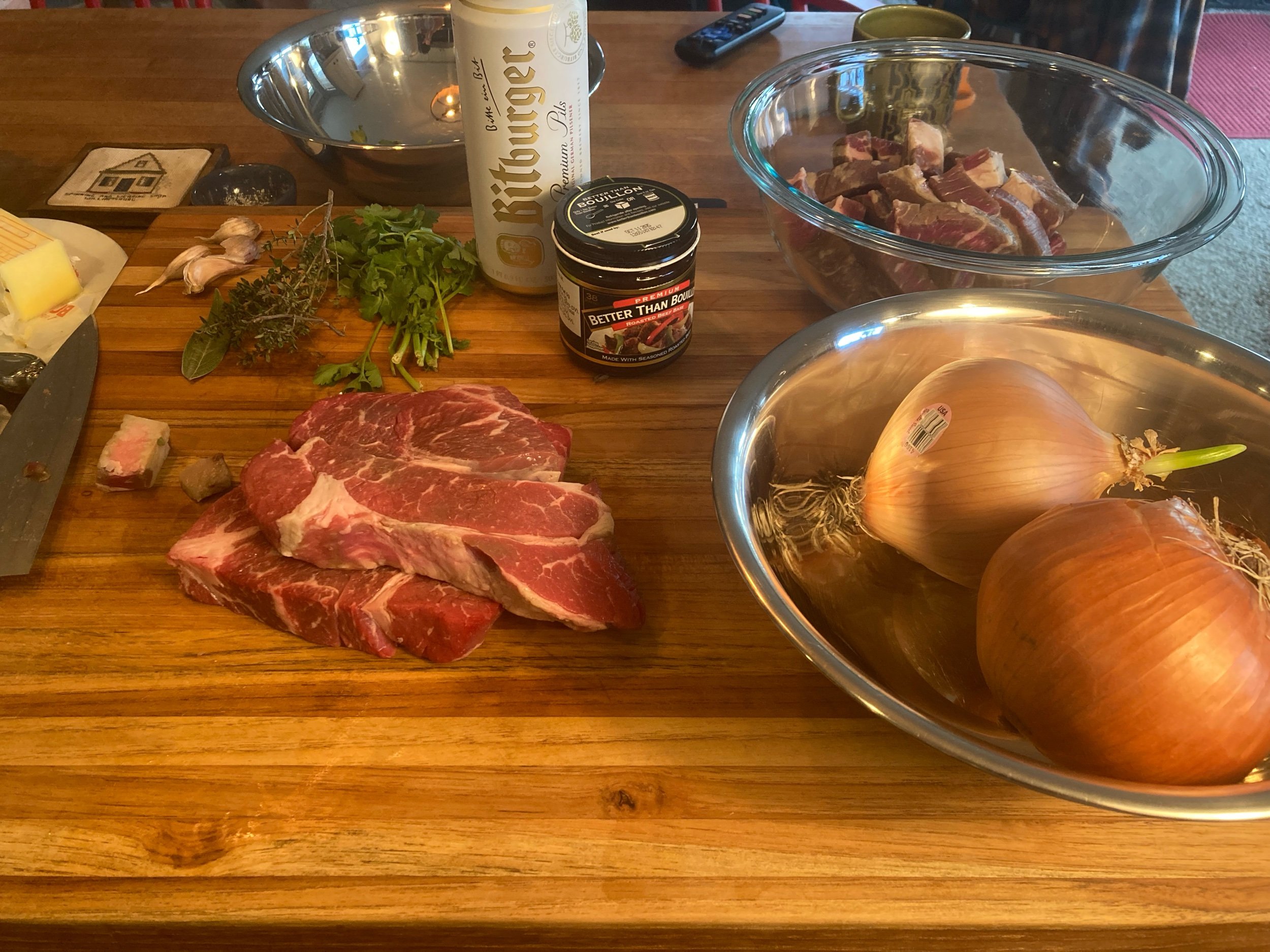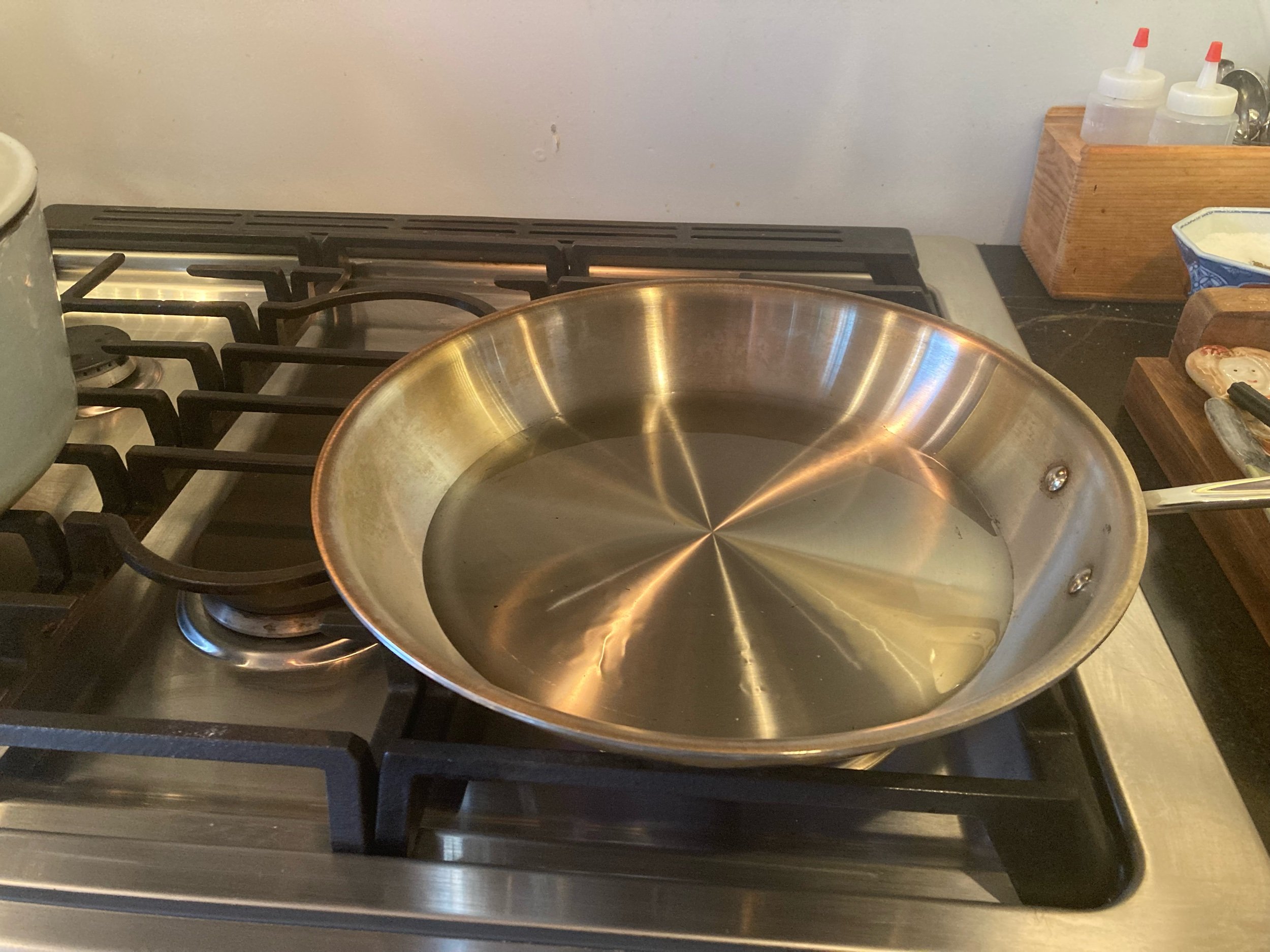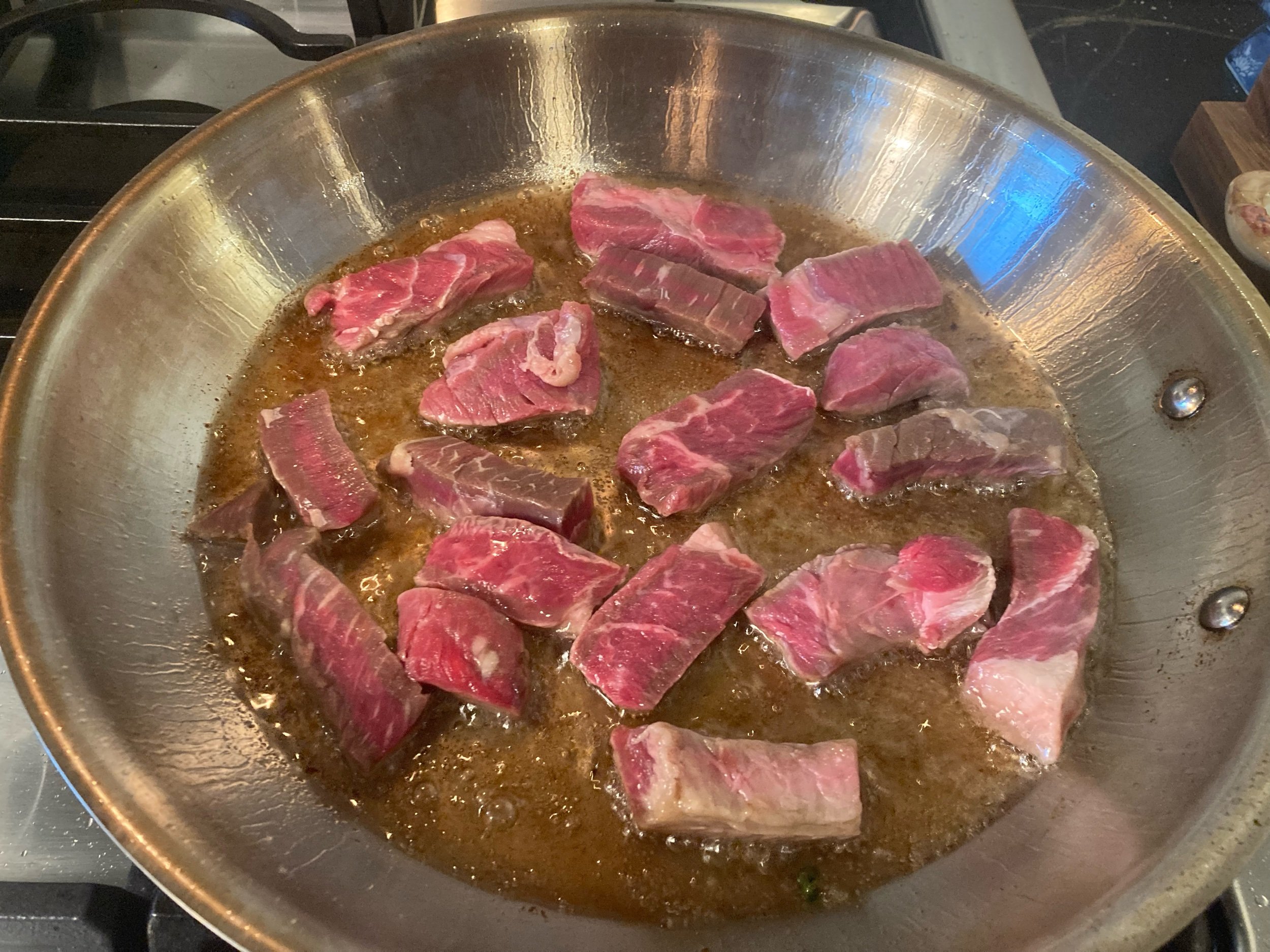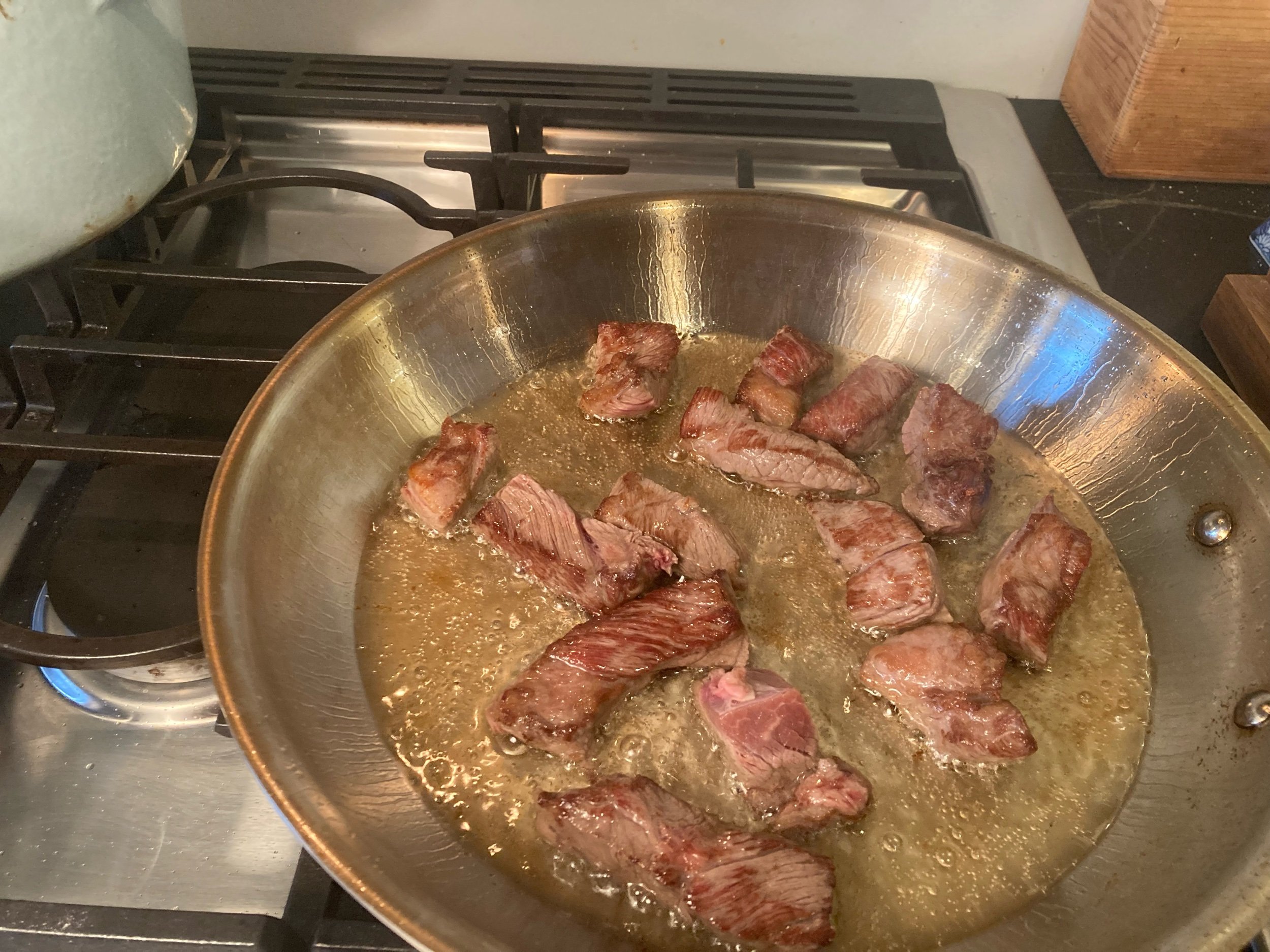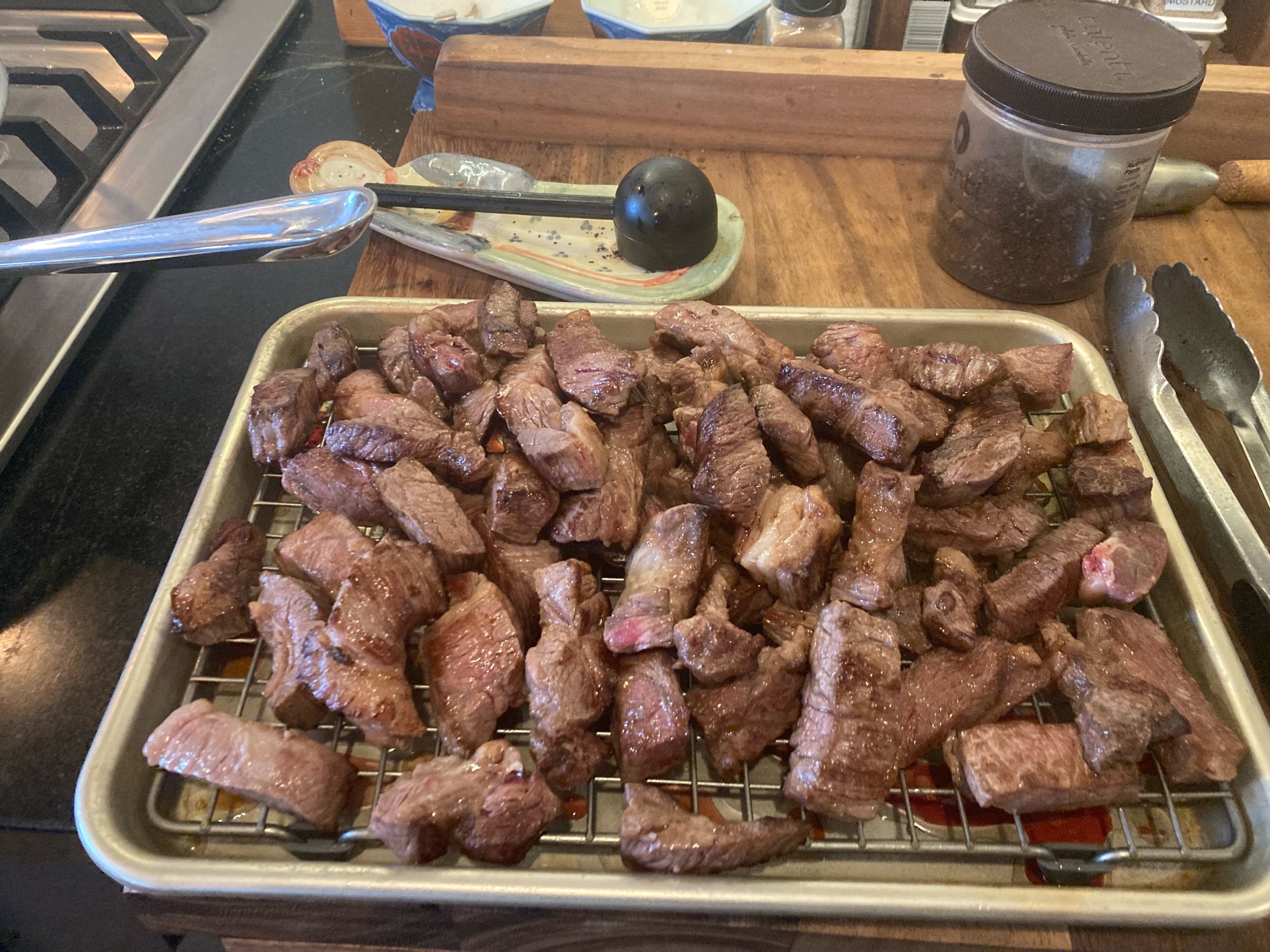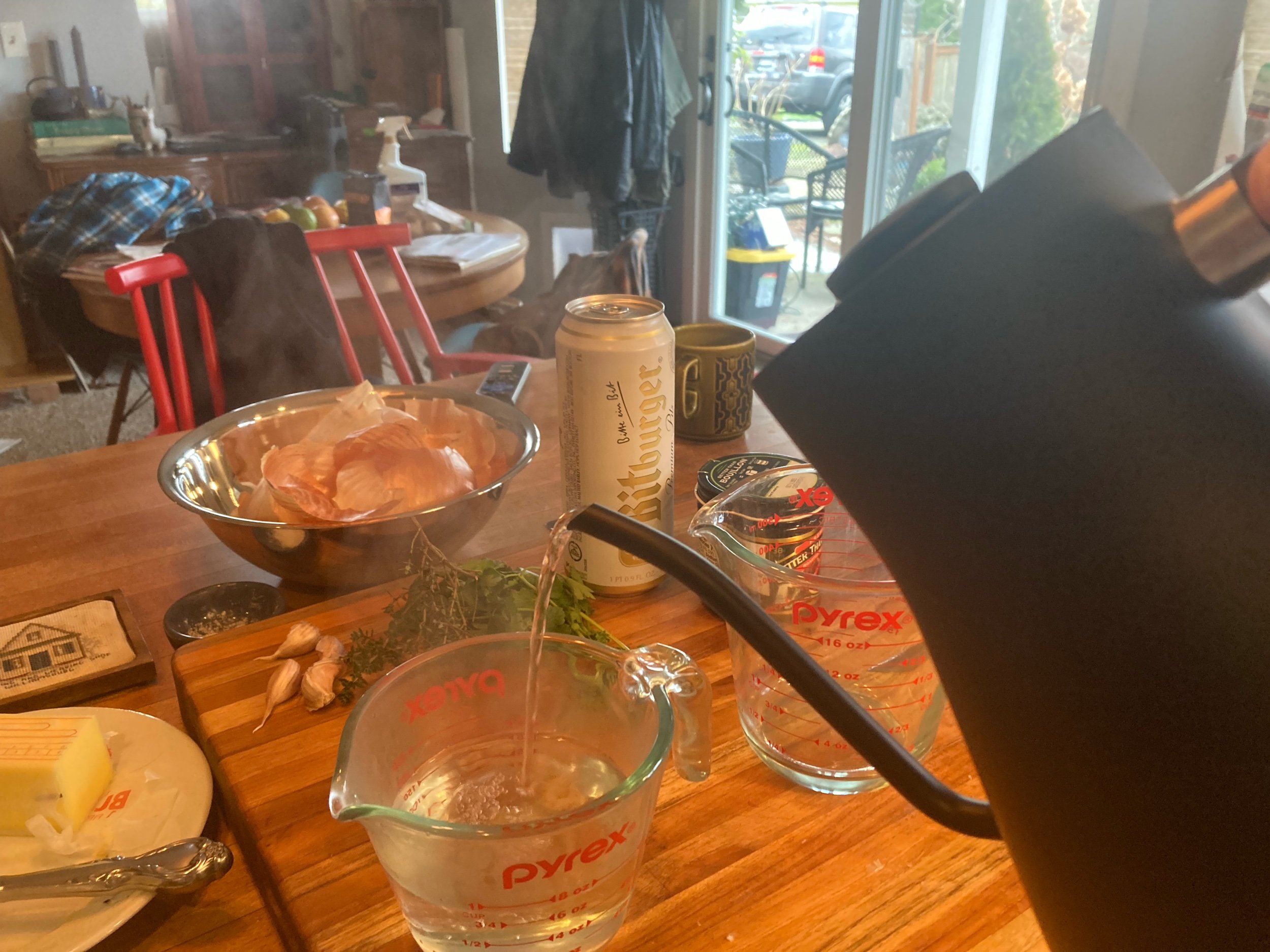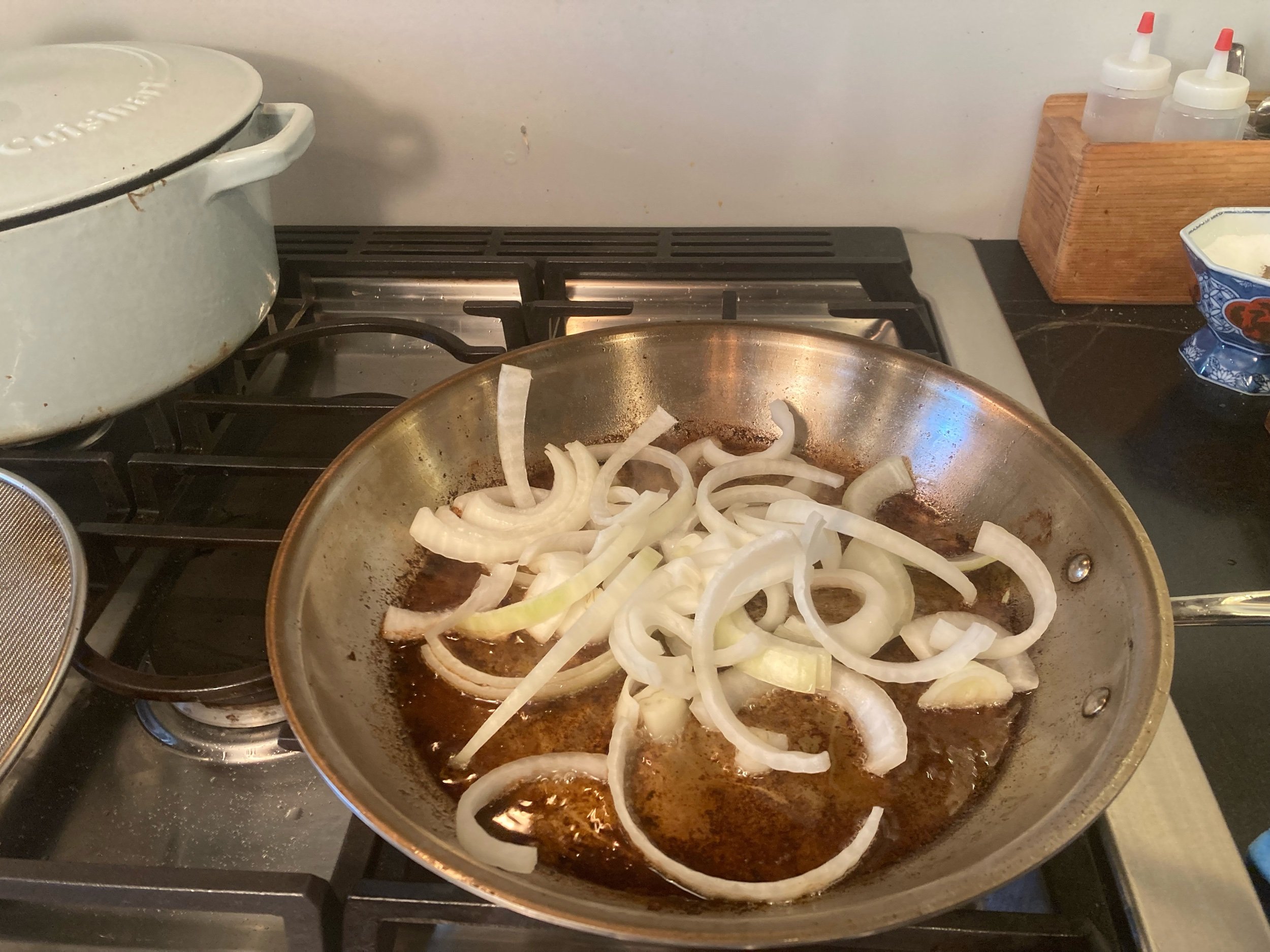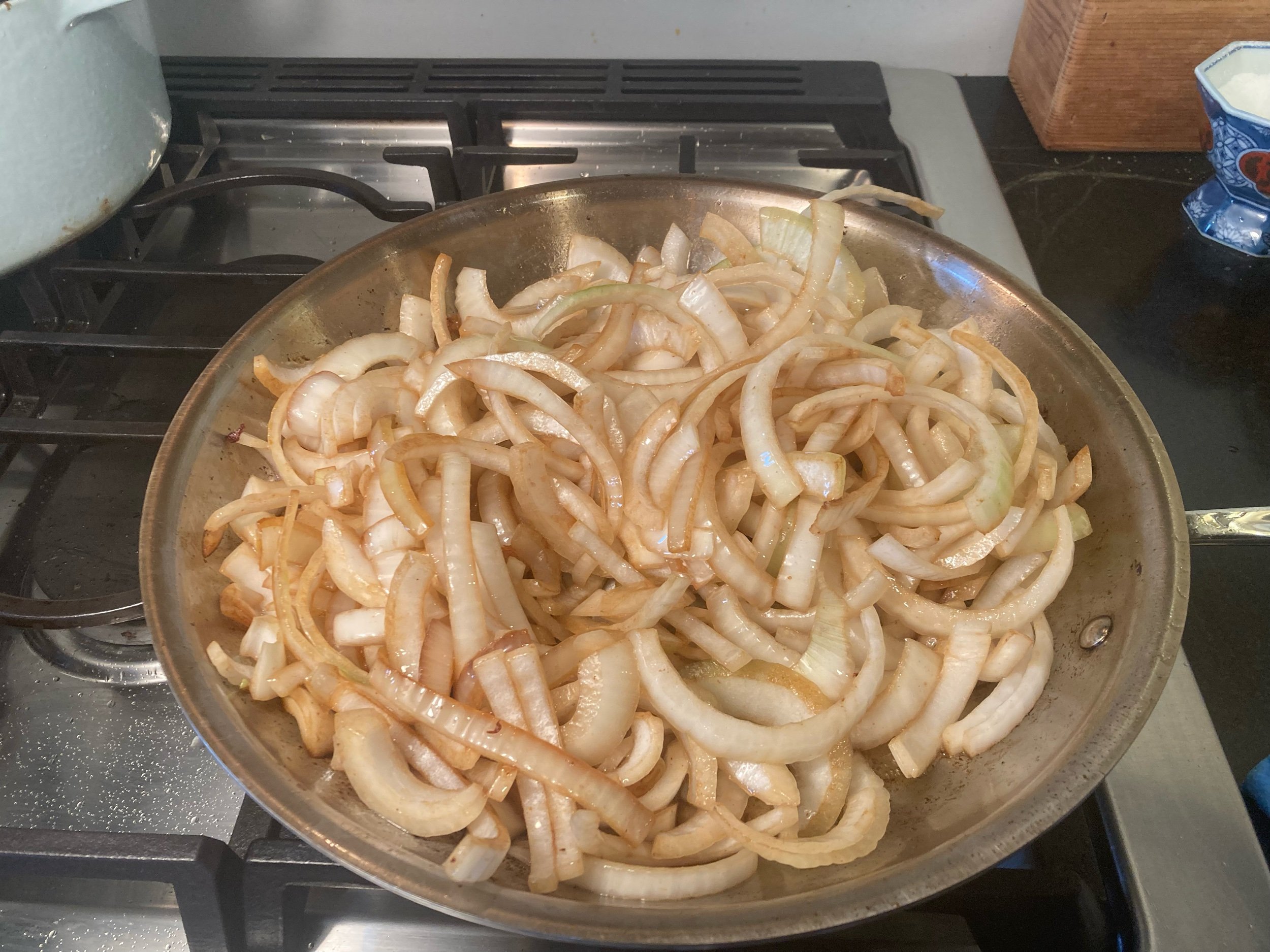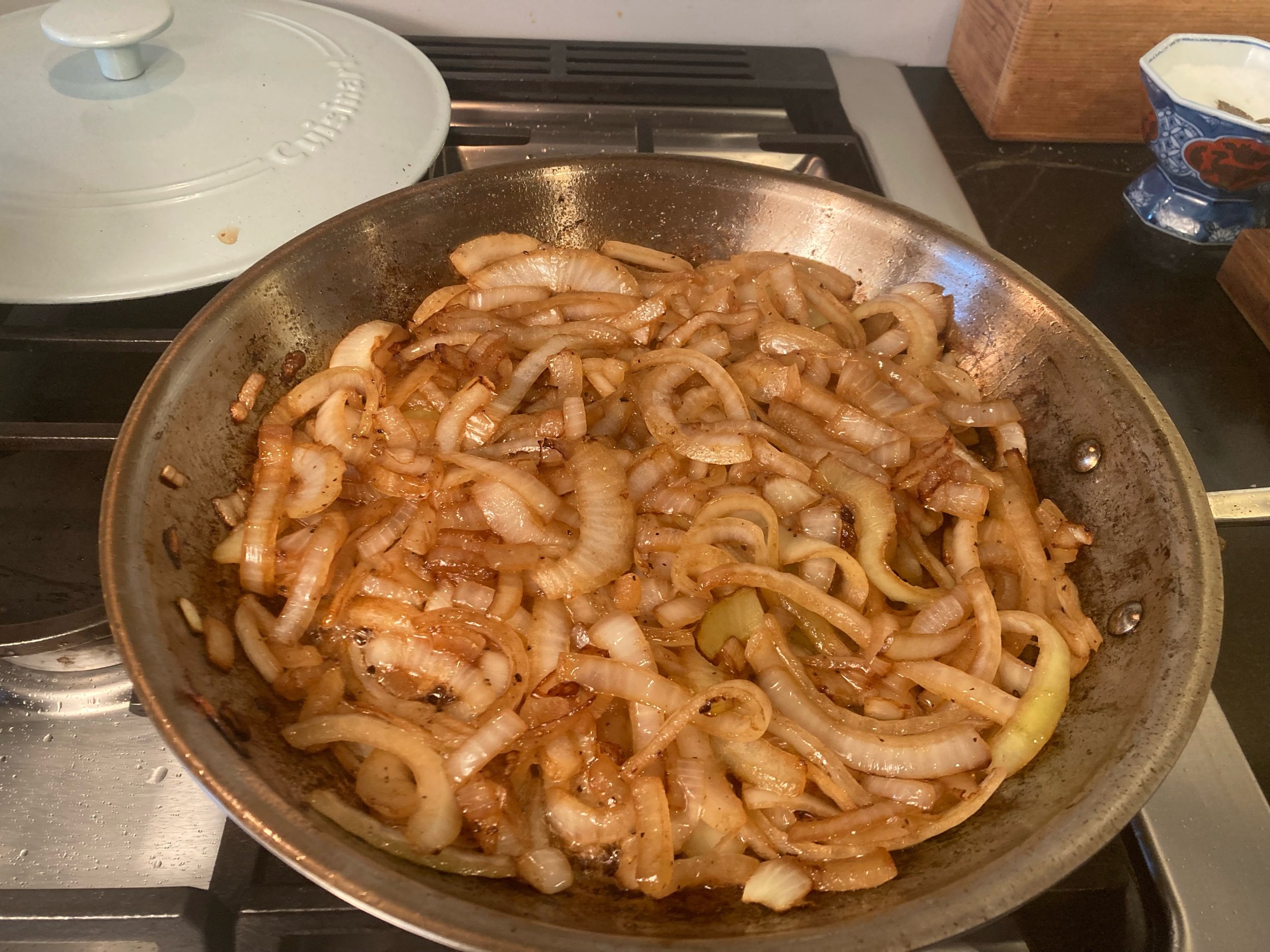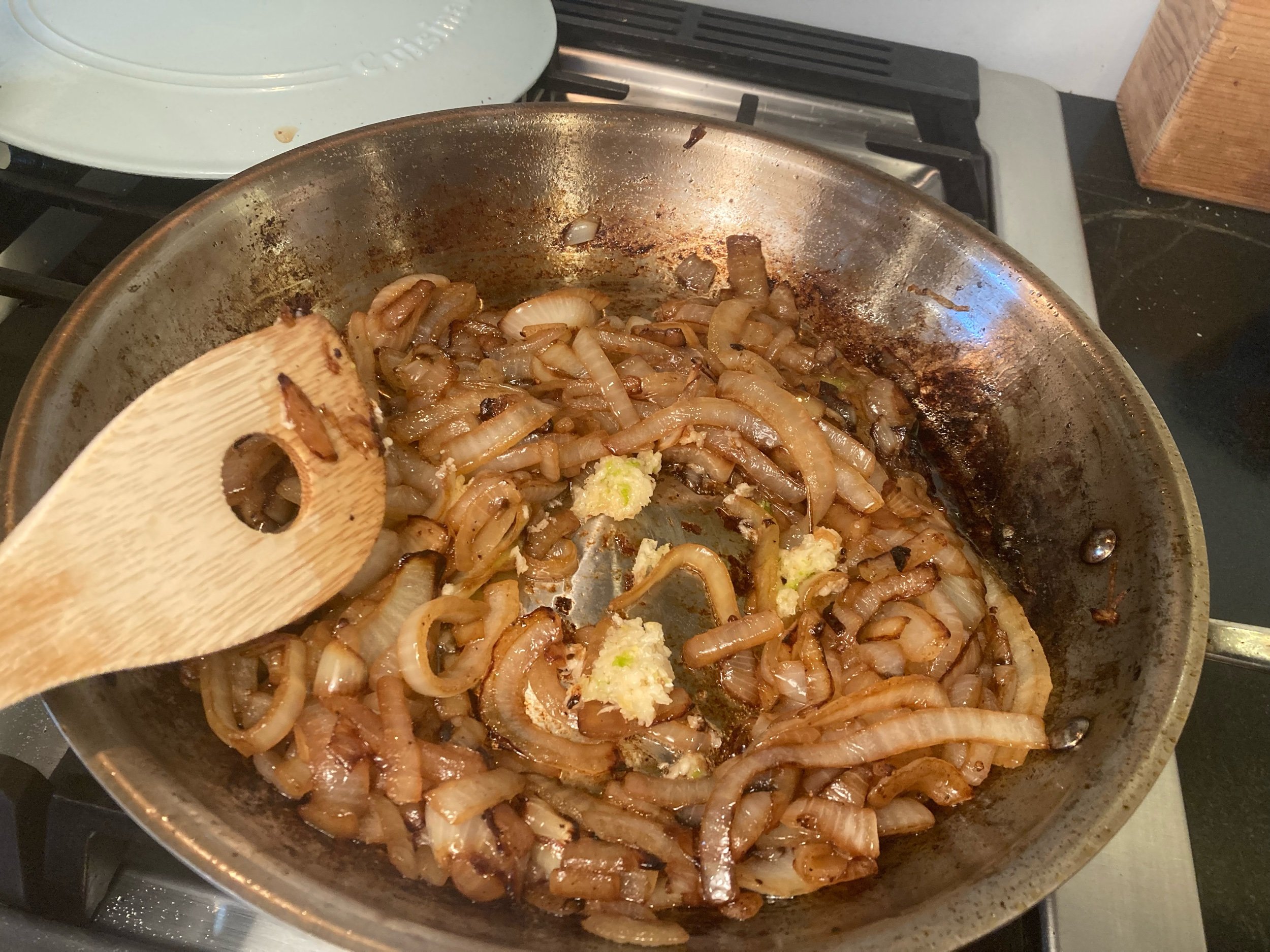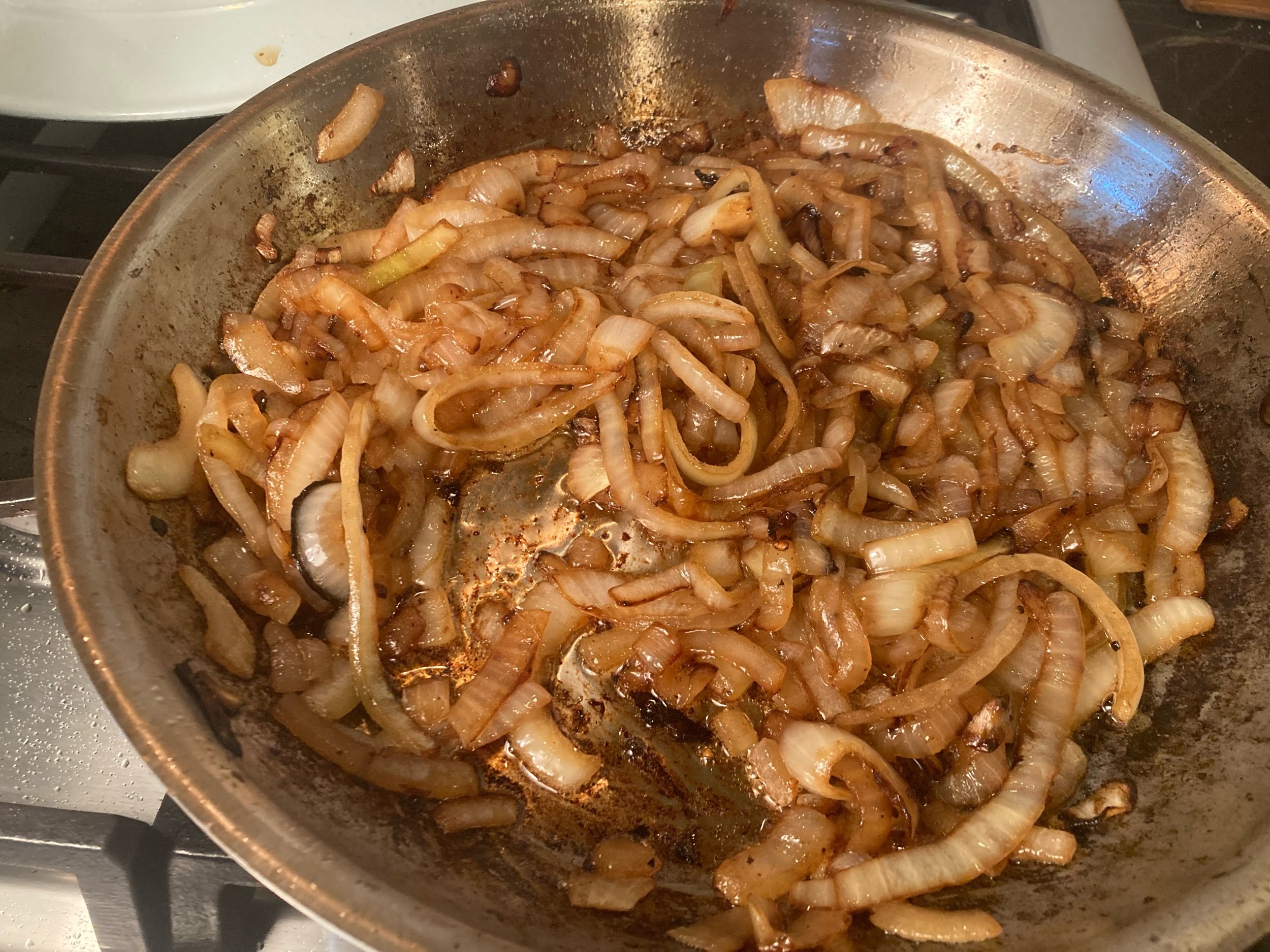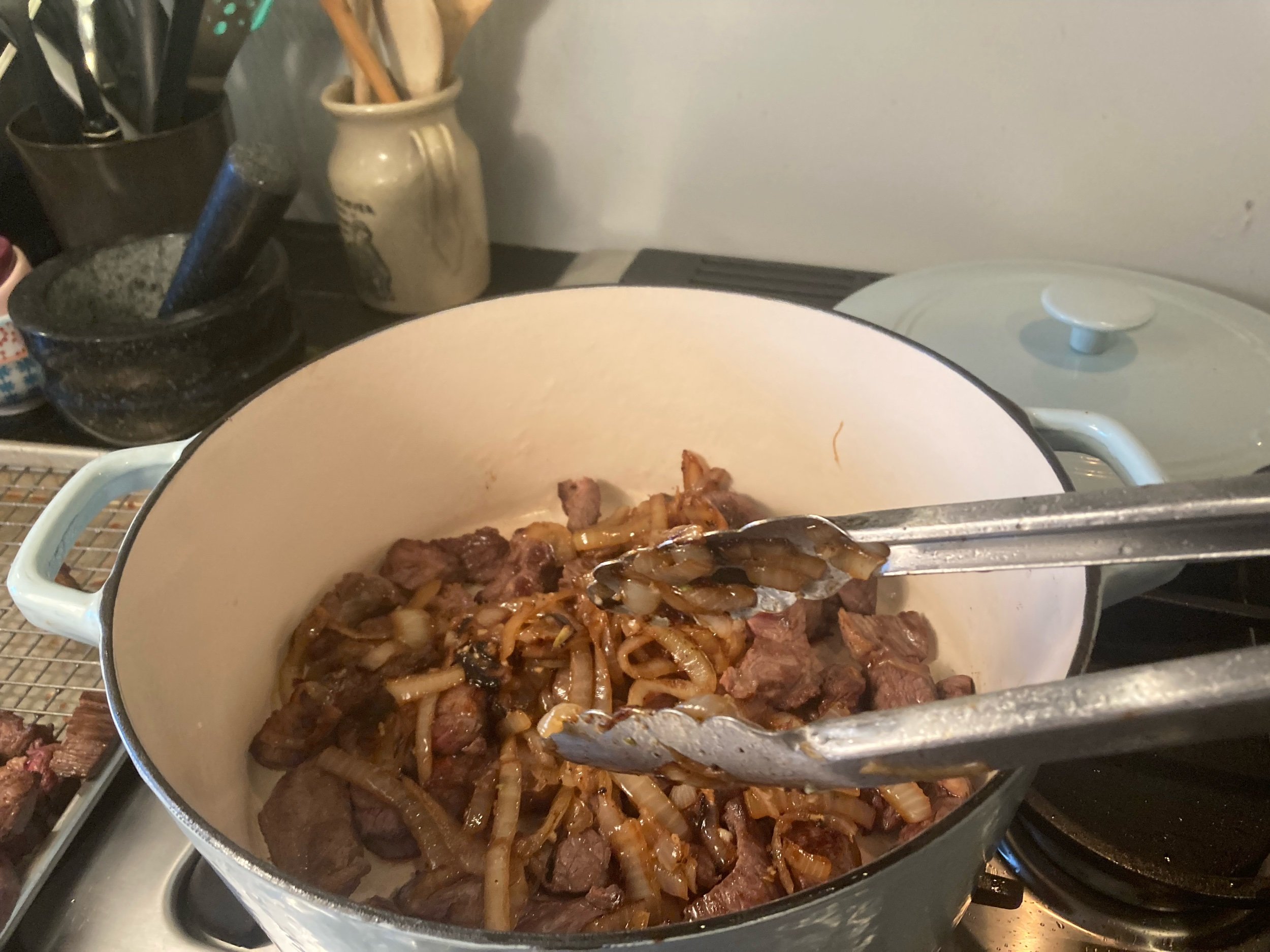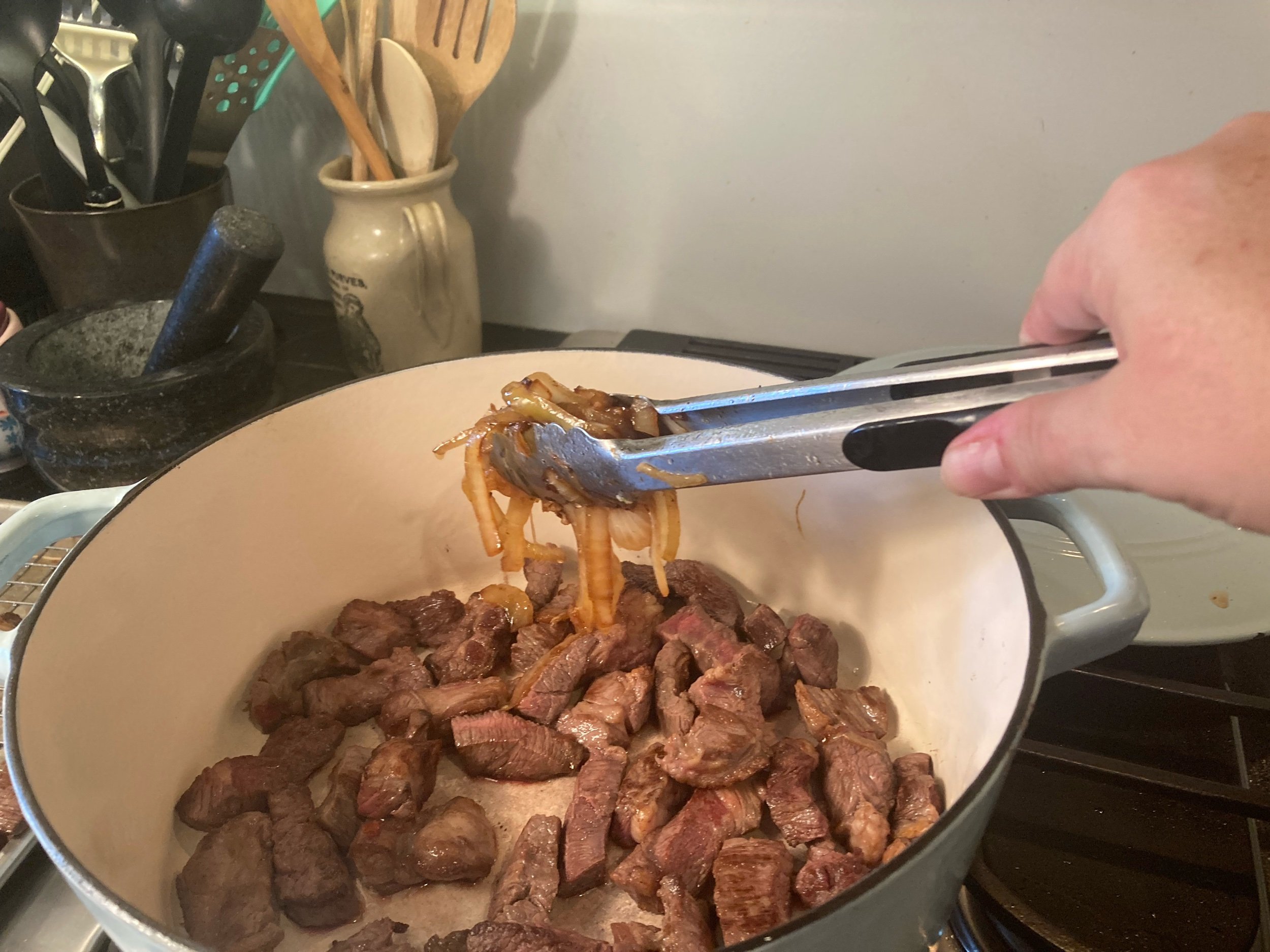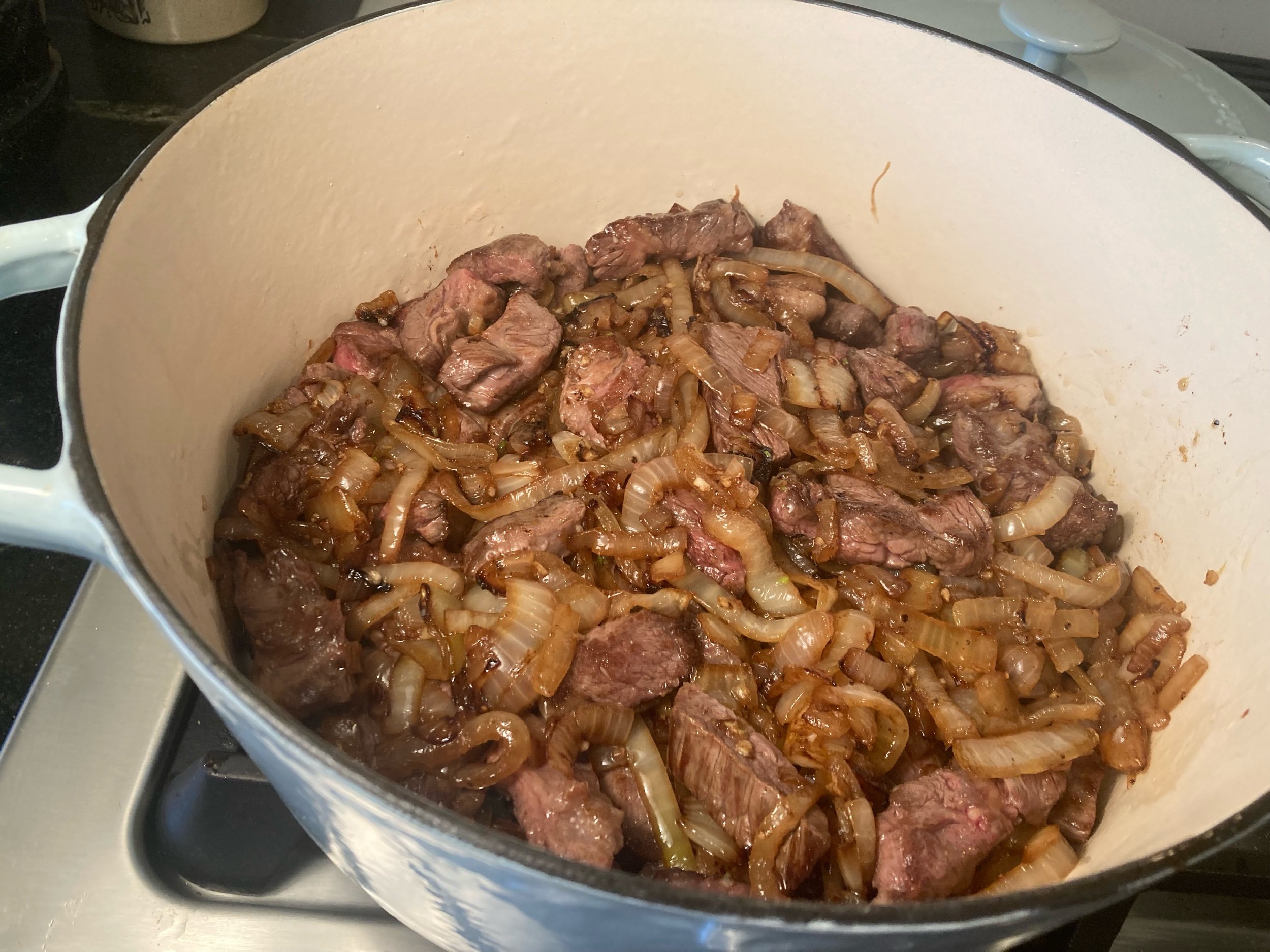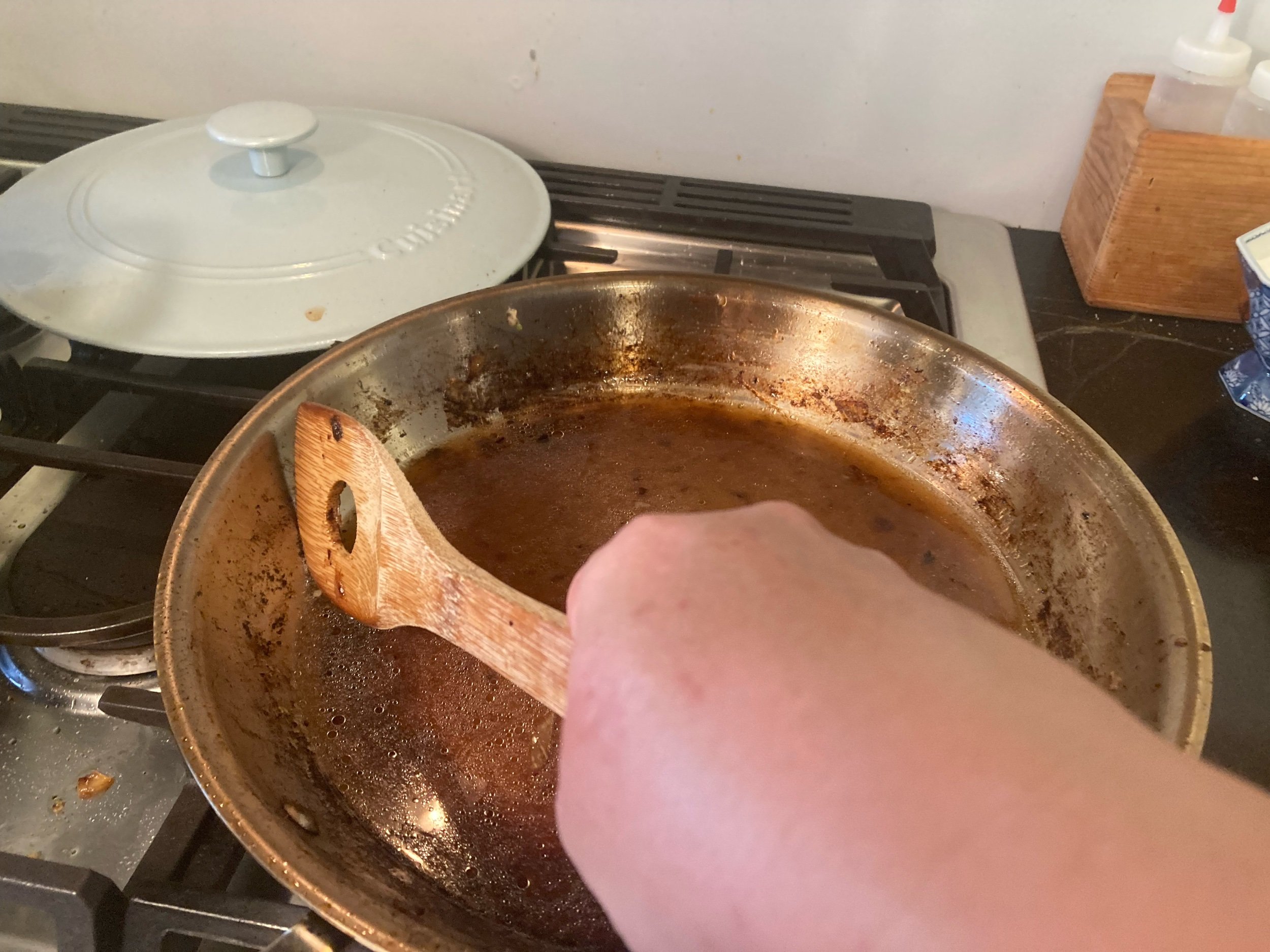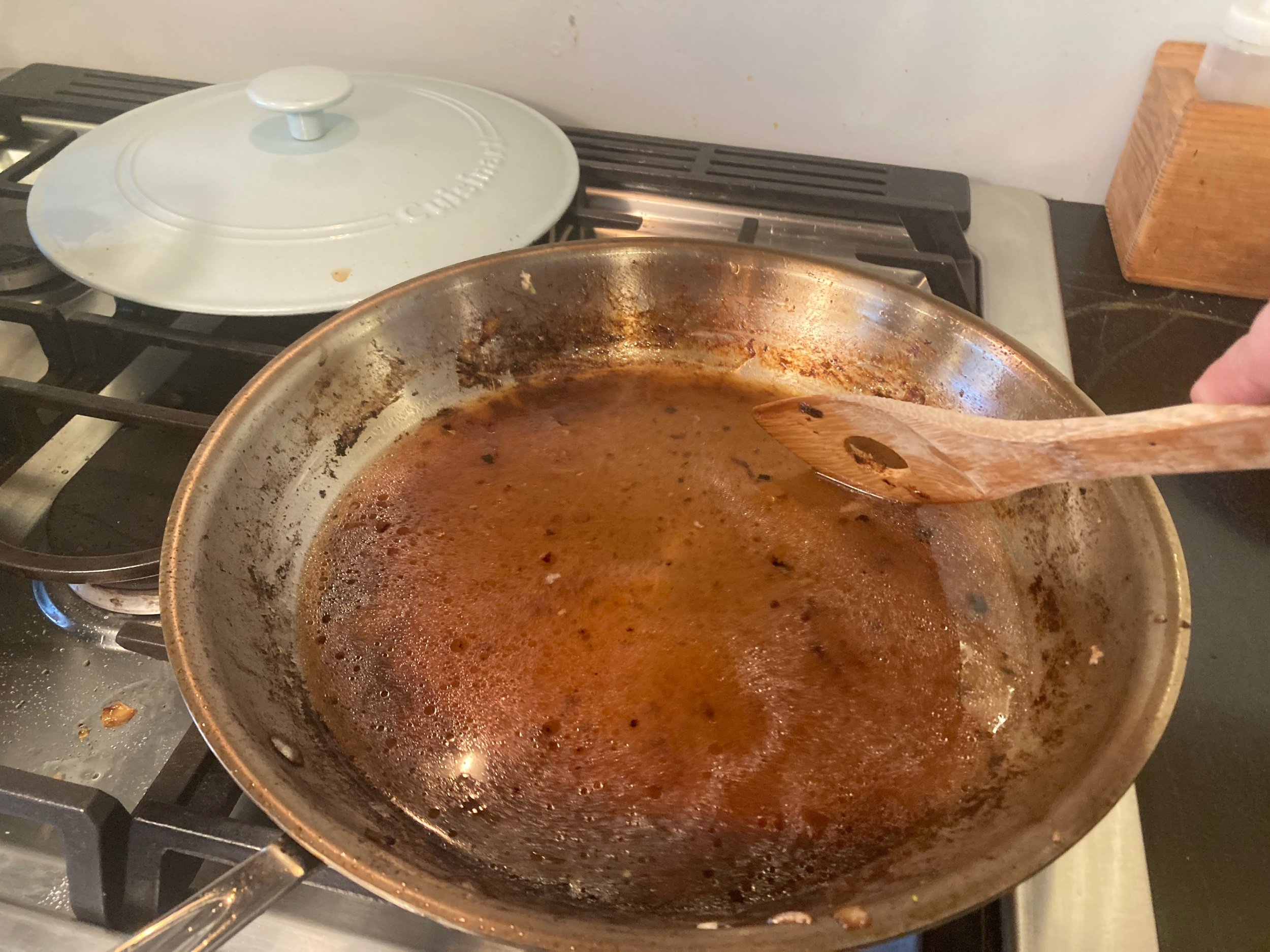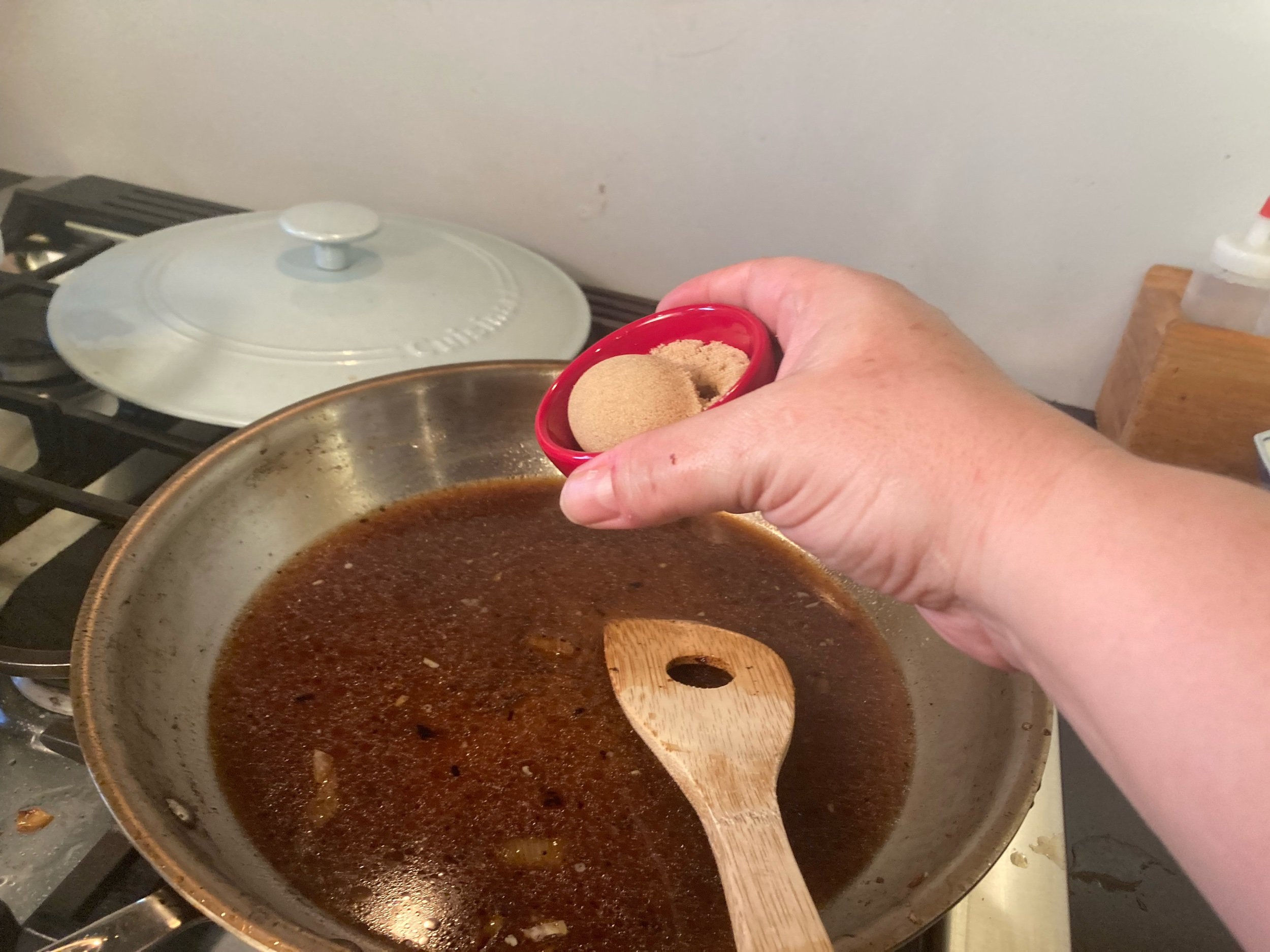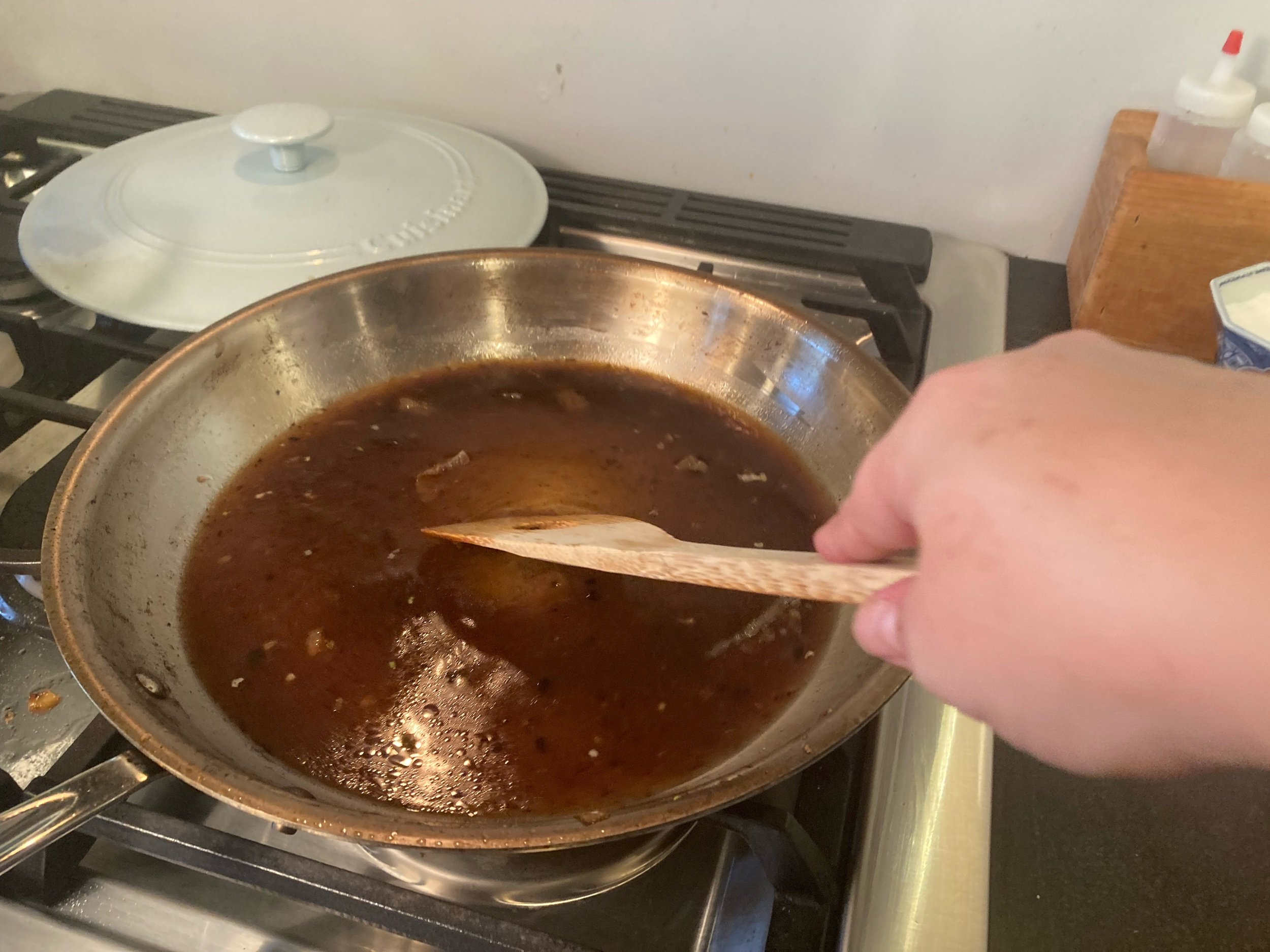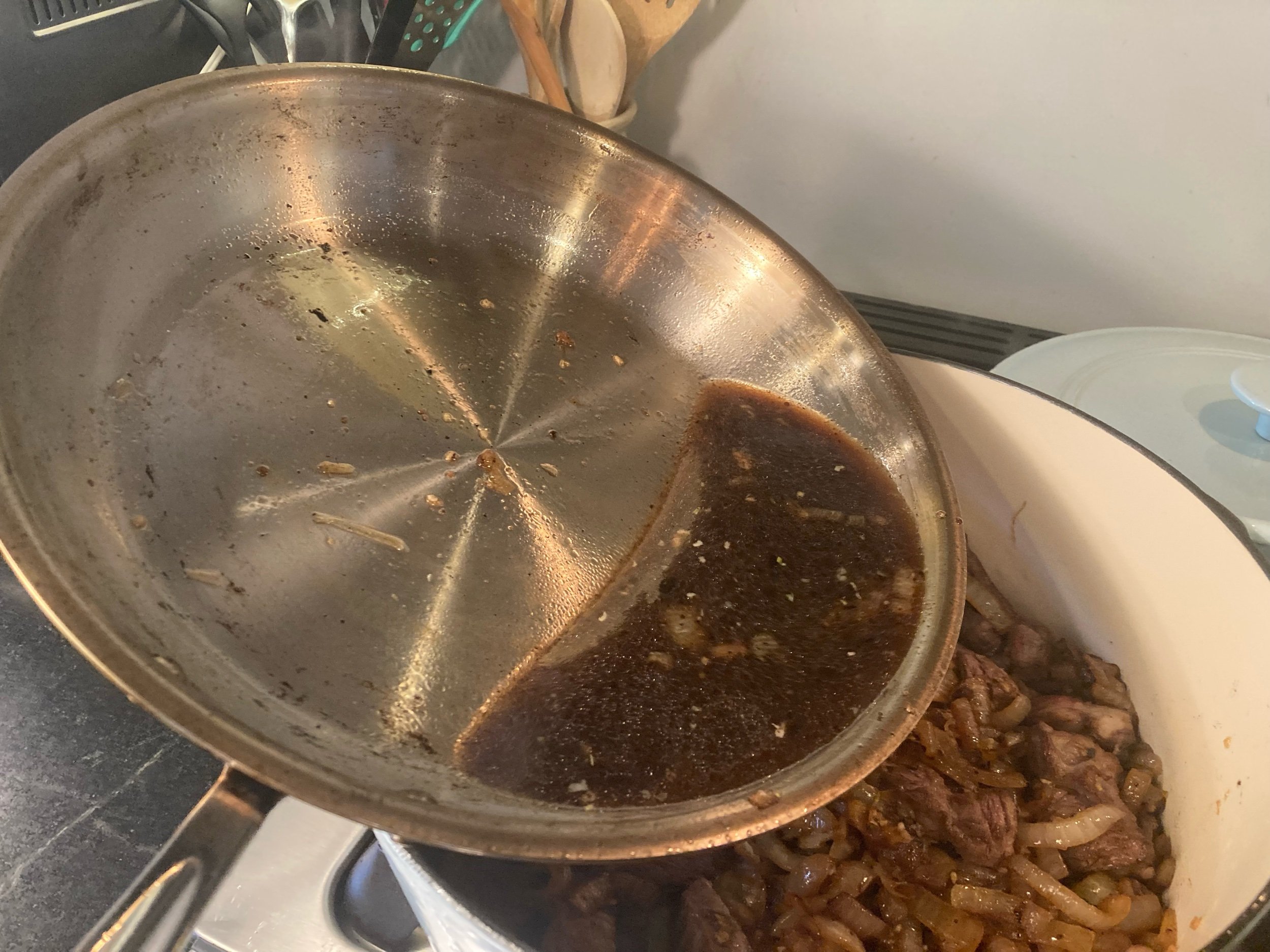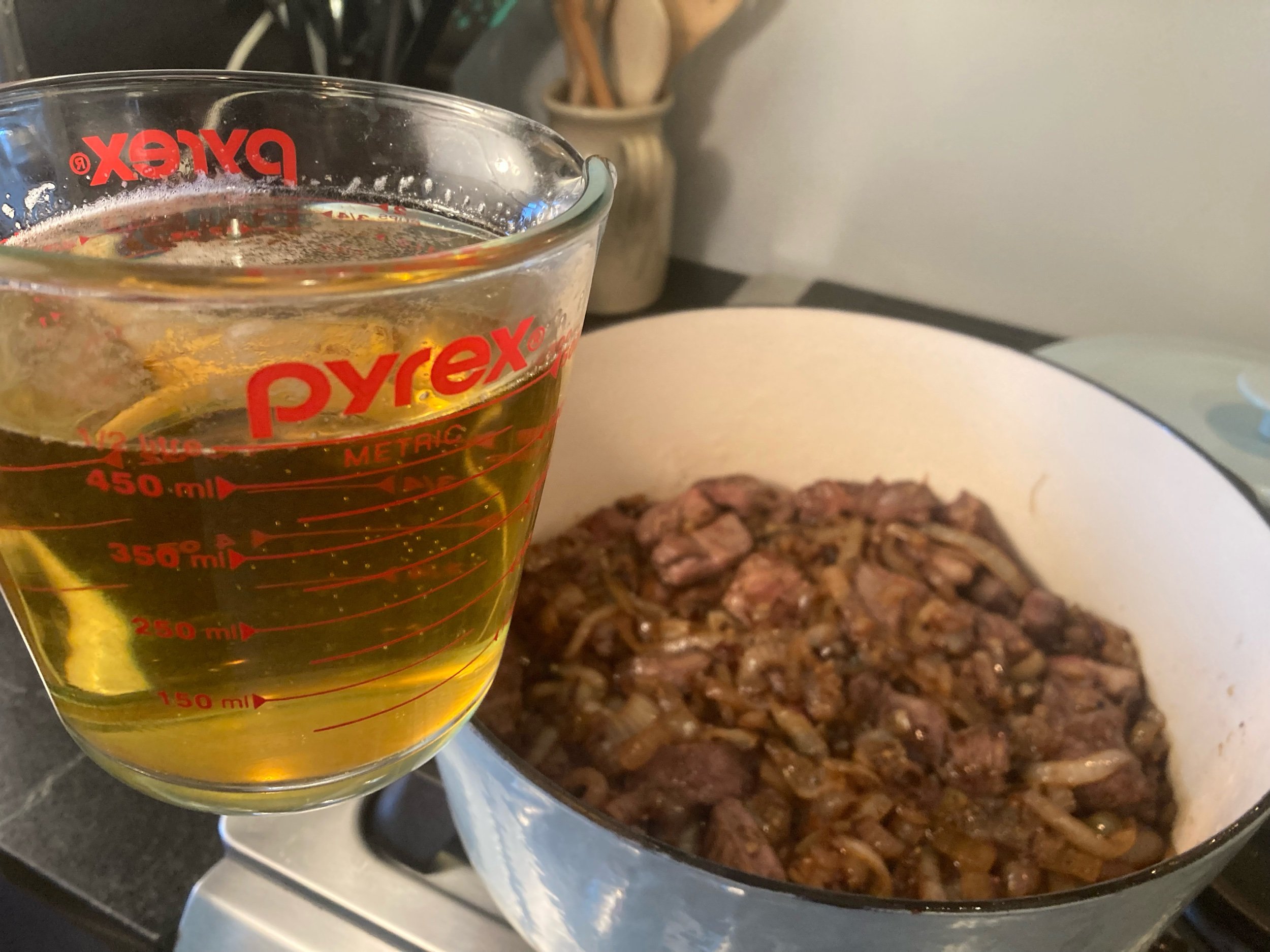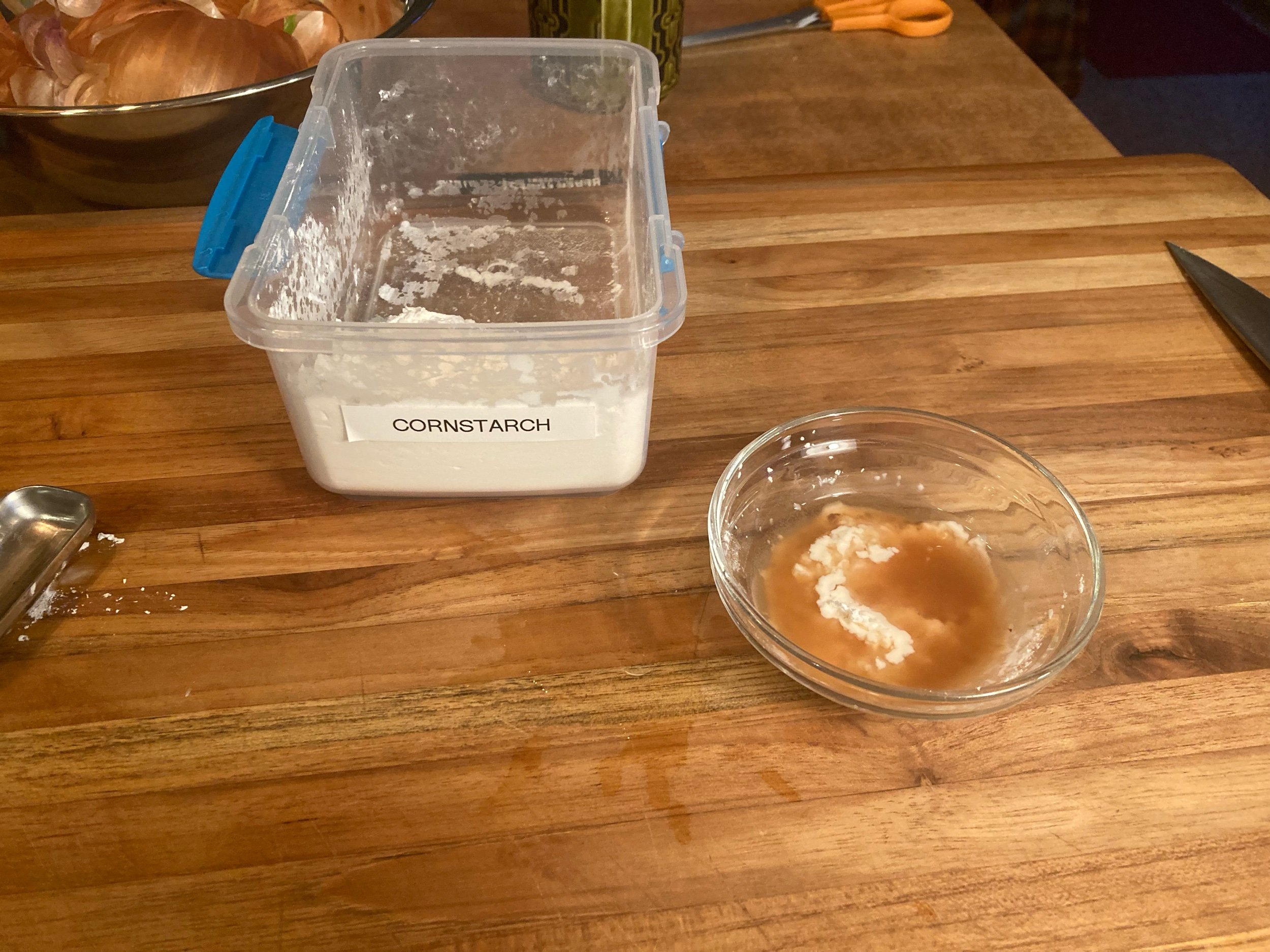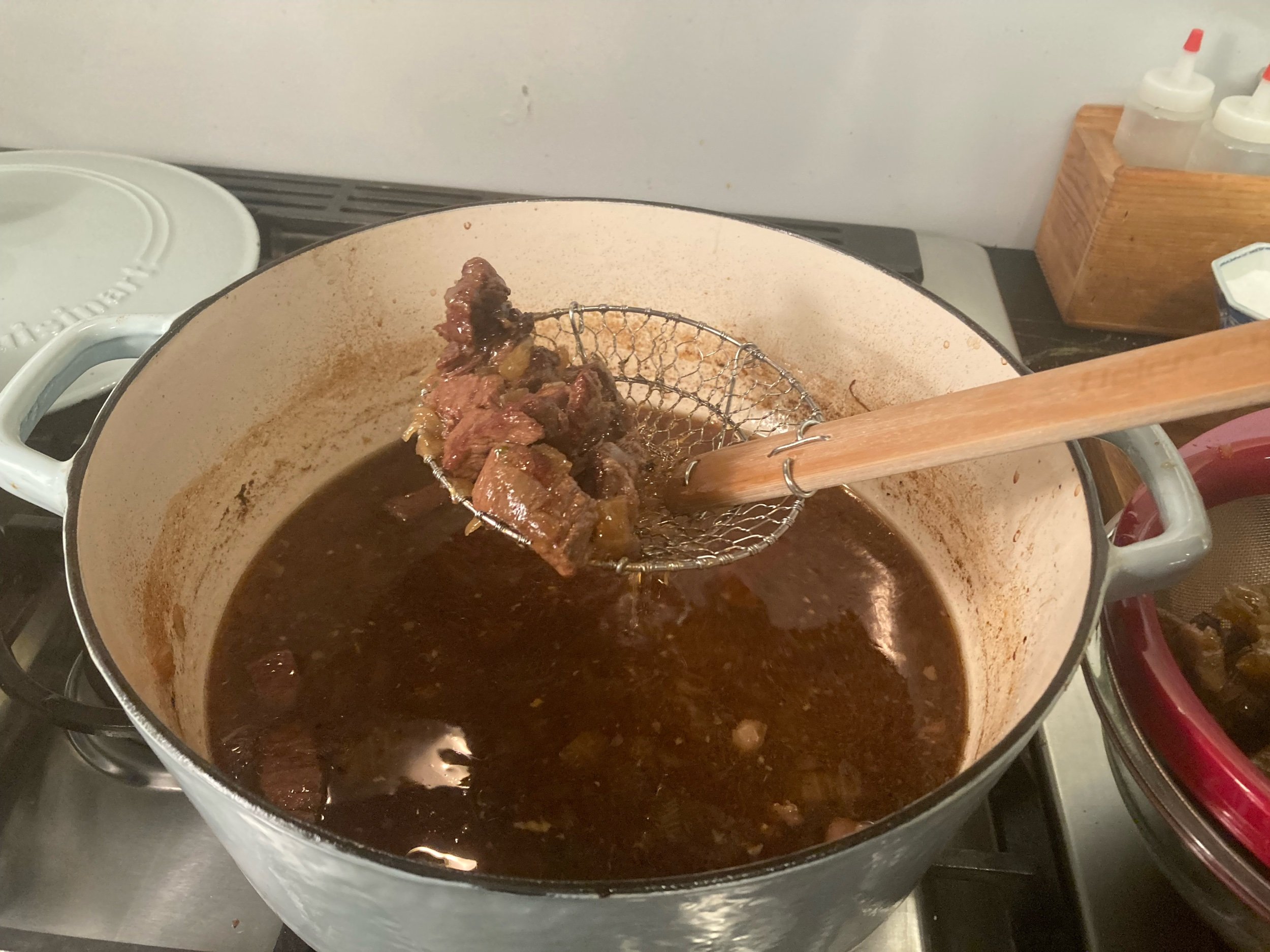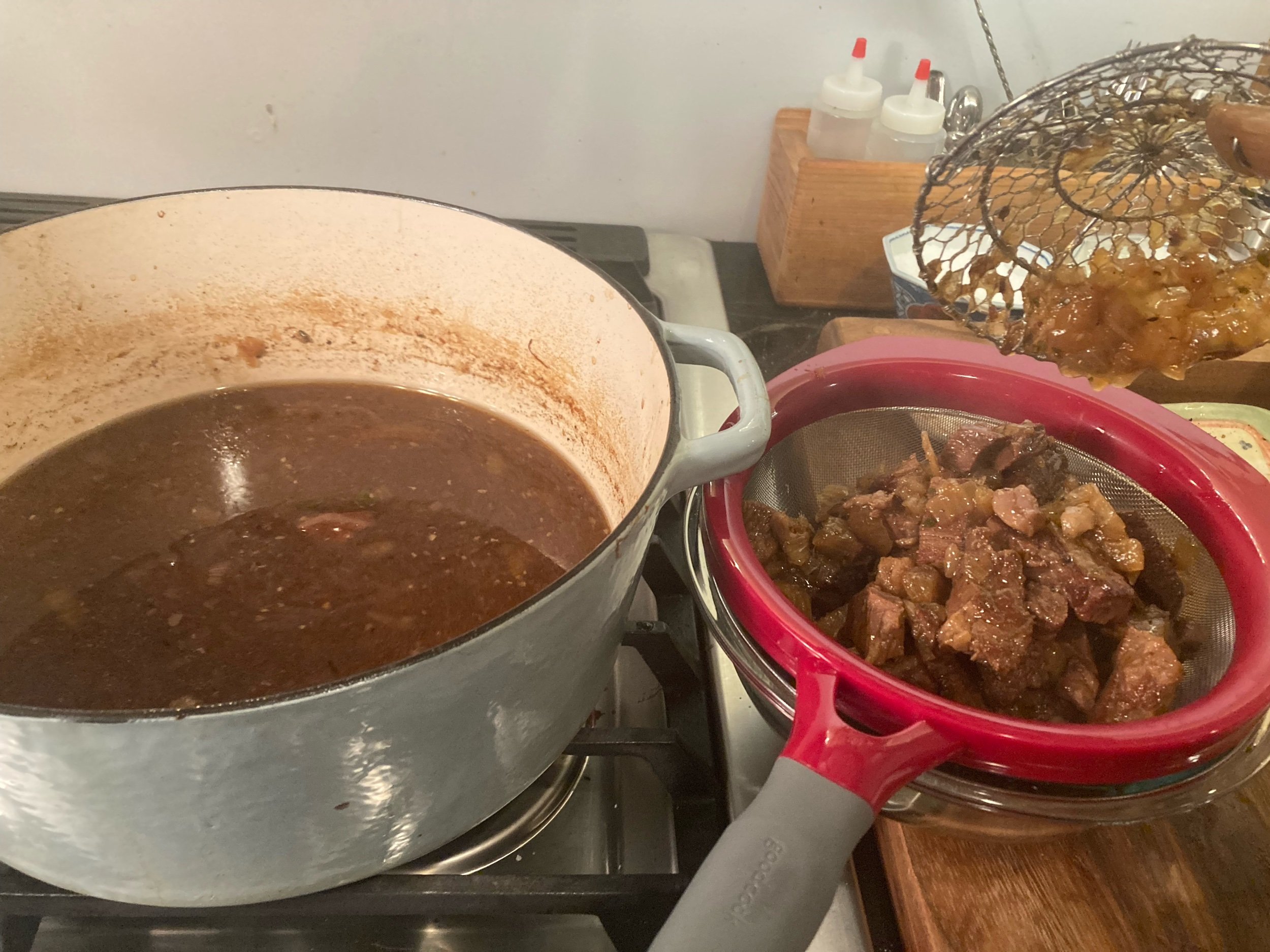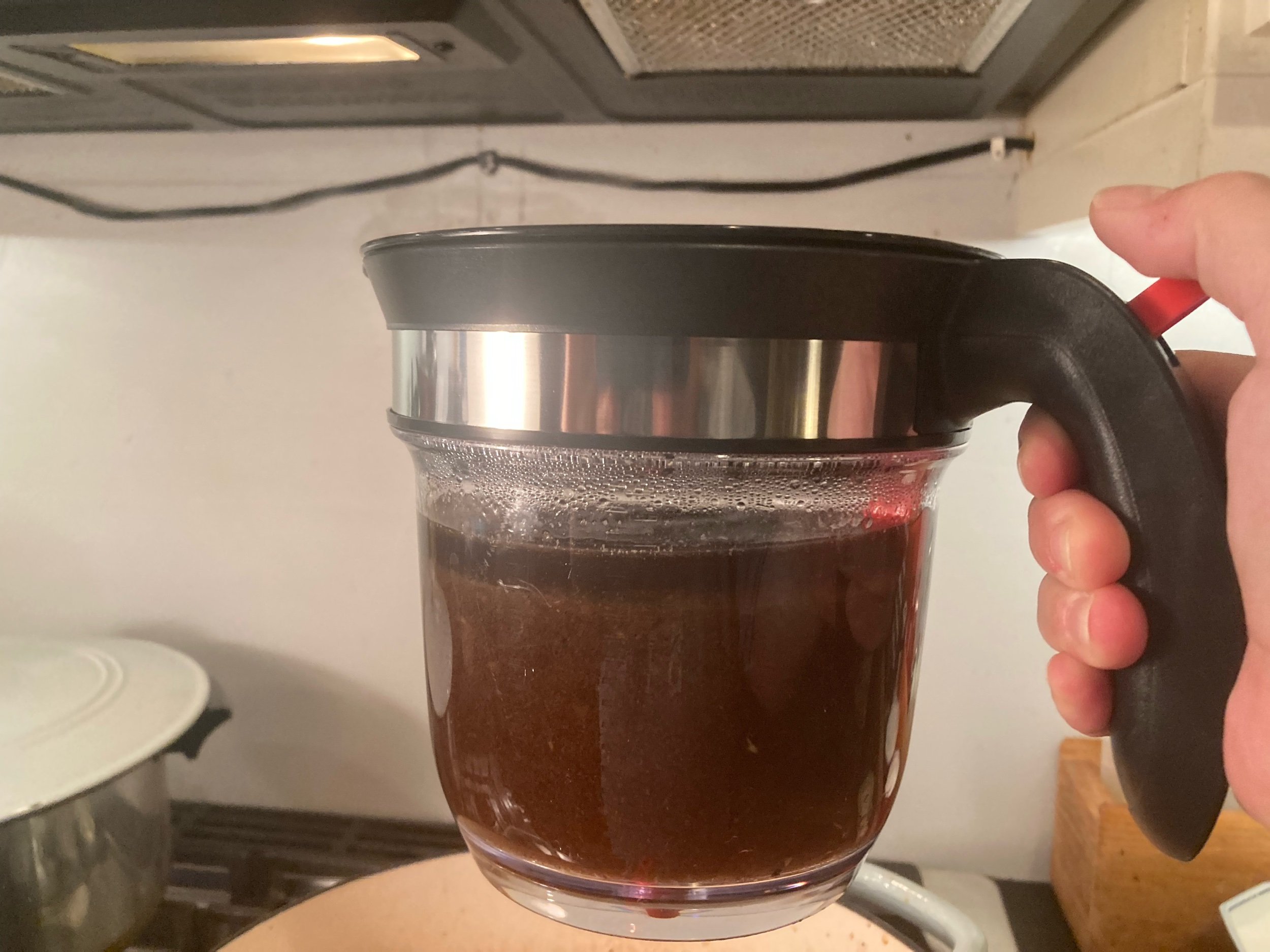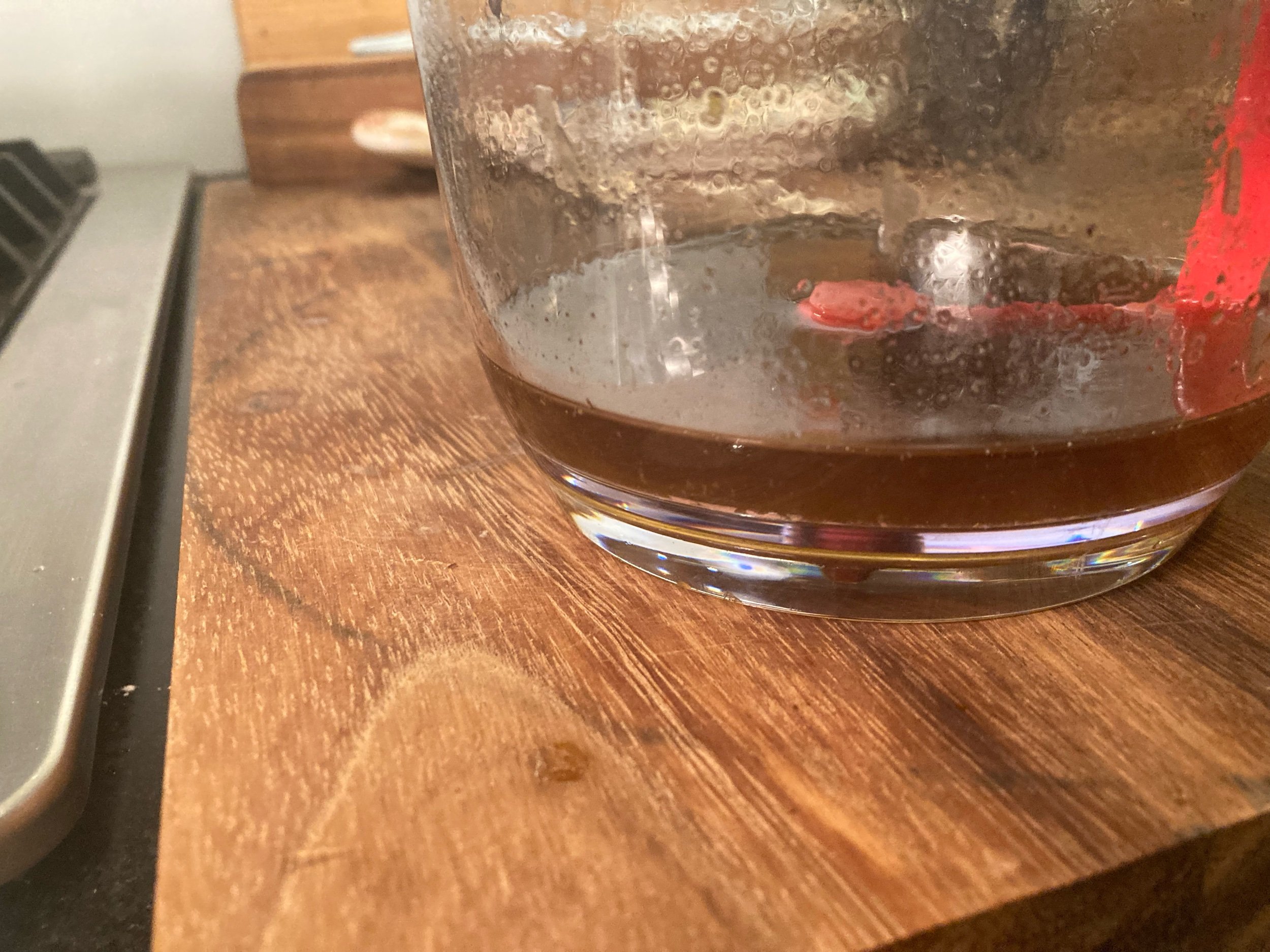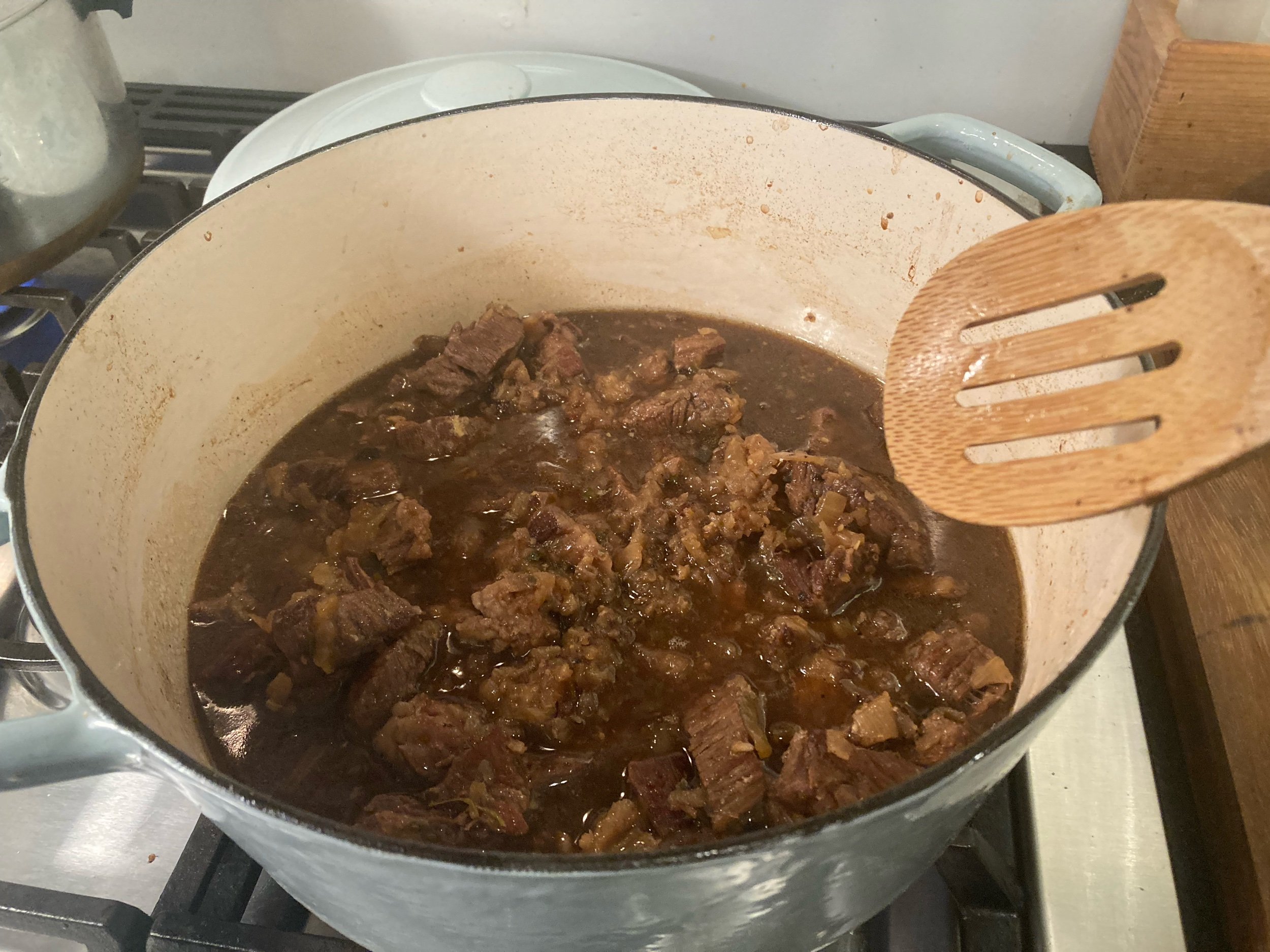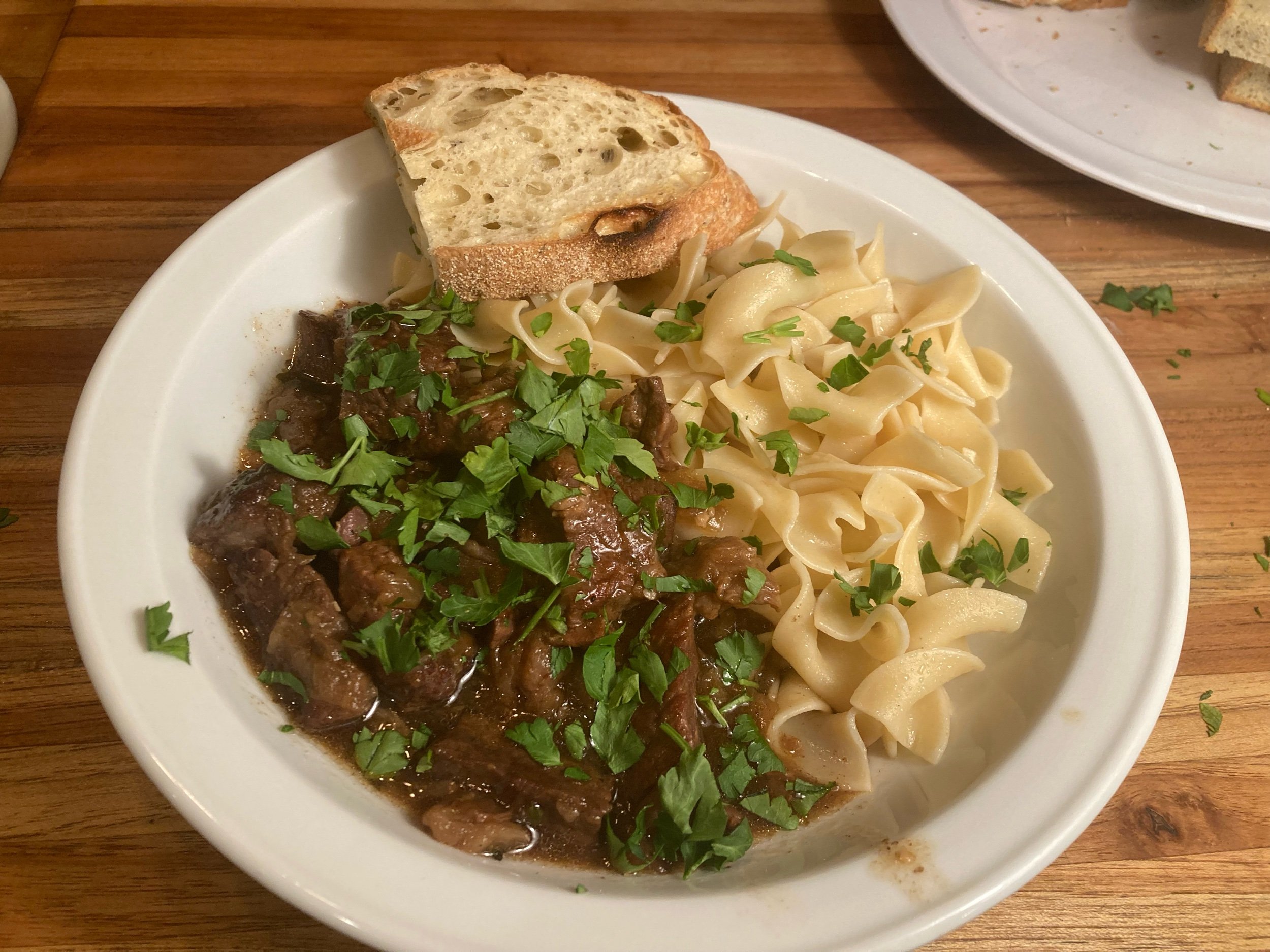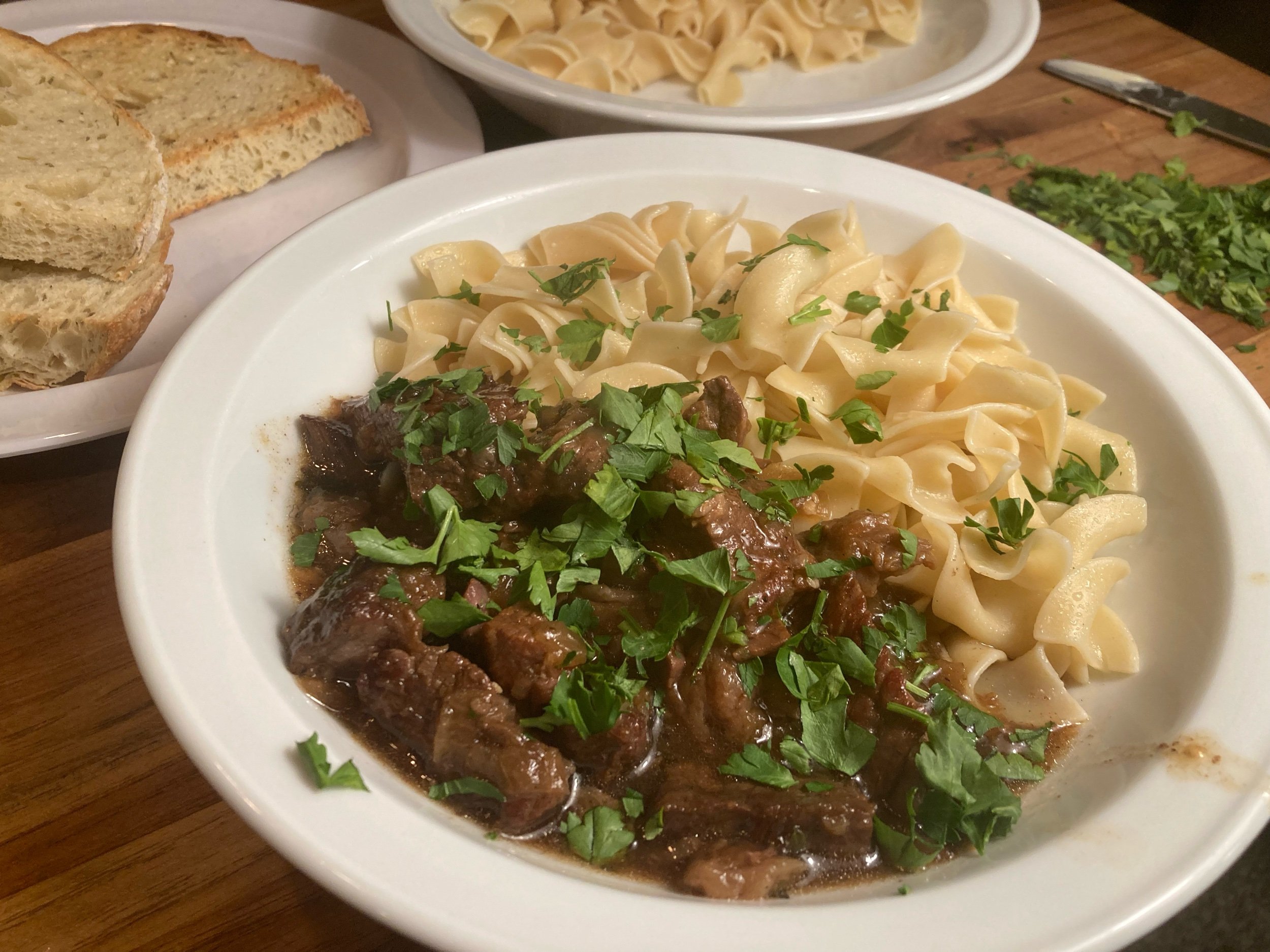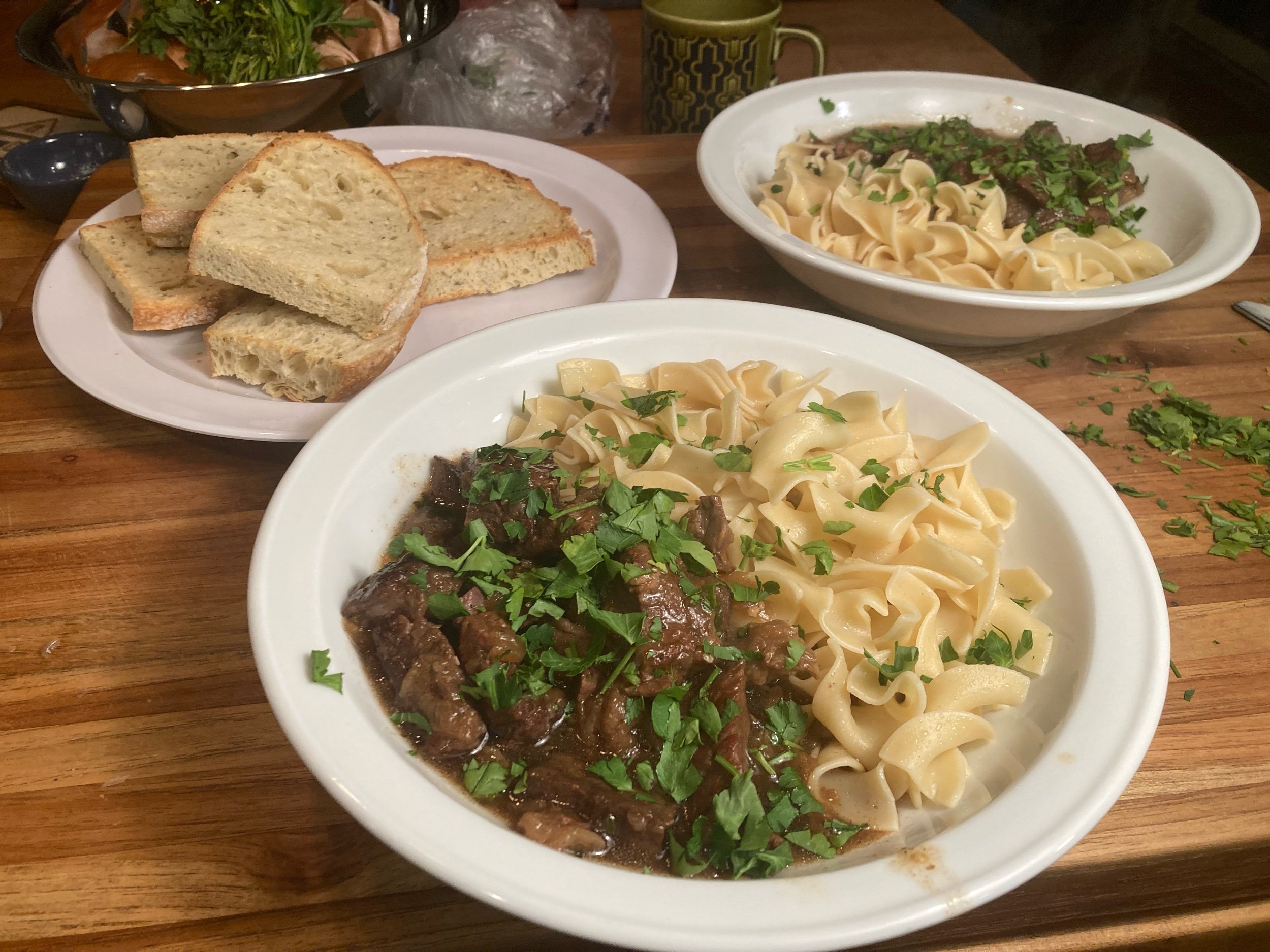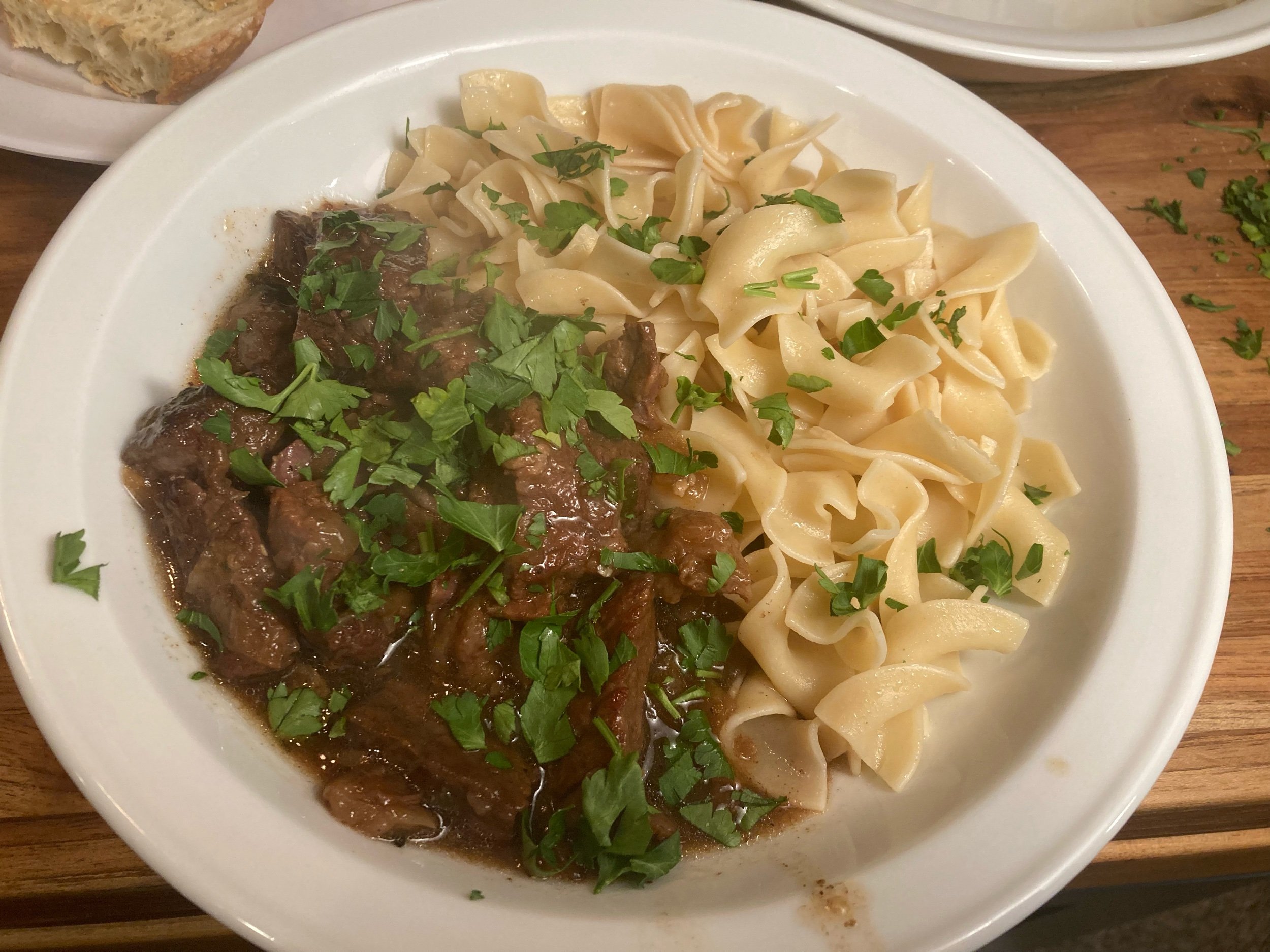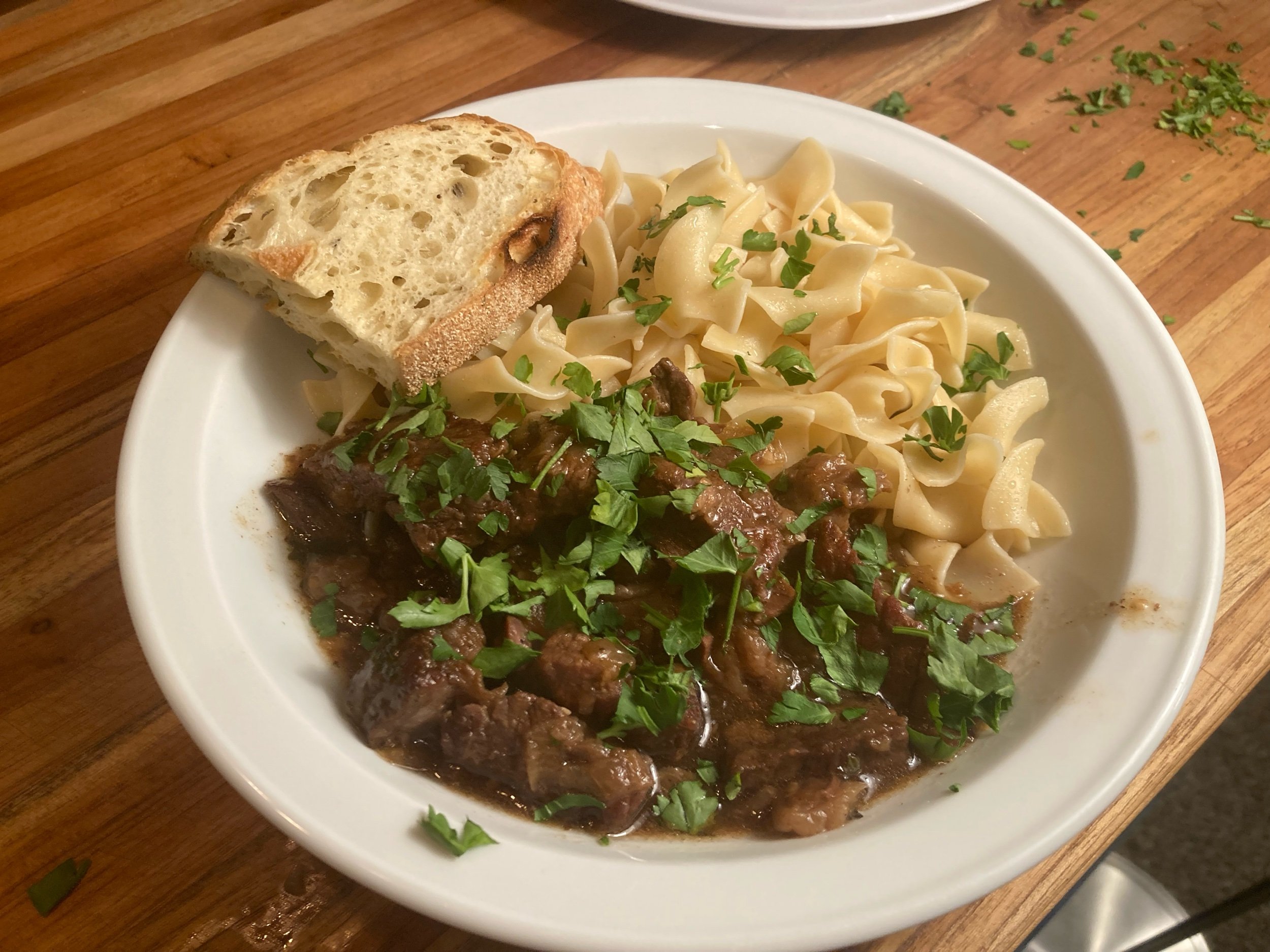Carbonnades A La Flamande (Beef and Onions Braised in Beer)
From Mastering the Art of French Cooking by Julia Child et al (317)
Today imma make a Flemmish beef stew.
Frontmatter: It’s raining out here in the PNW, and it’s almost onion planting season here, so I need a good reminder of why I shouldn’t skimp on planting onions this year, as I did last year. I don’t know.
This seems like a recipe where the fundamental flavor will be largely defined by the beer chosen. I’m not usually a pilsner person, but I’m going with Julia’s pilsner suggestion. I suspect a brown ale would also be nice, or a darker Belgian ale. This recipe reminds me of another Flemish beef stew I make for my honey sometimes called a Stoofvlees.
This Stoofvlees recipe from the BBC is wonderful. It uses a Belgian ale, has a lingonberry syrup as a sweetener, and has you layer mustard-spread brown bread on top which disintegrates and acts as a thickener. While Julia asks for a Pilsner, adds brown sugar, has us add corn starch and boil the braising liquid down a bit to thicken it after the beef and onions are removed.
Equipment:
A heavy skillet
A 9-10” fireproof casserole, about 3 ½” deep
Ingredients:
A 3-lb piece of lean beef from the chuck roast or rump (boneless beef chuck steaks)
2-3 Tb rendered fresh pork fat or good cooking oil
A ½ lbs or 6 cups of sliced onions
Salt and pepper
4 cloves mashed garlic
1 cup strong beef stock or canned beef bouillon
2-3 cups light beer, Pilsner type
2 Tb light brown sugar
1 large herb bouquet: 6 parsley sprigs, 1 bay leaf, and ½ tsp thyme tied in cheesecloth.*
1 ½ Tb arrowroot or cornstarch
2 Tb wine vinegar
Parsley potatoes or buttered noodles
Parsley sprigs
*(Yeah, the cheesecloth thing is really not working for me. It’s not hard to fish out sprigs and a bay leaf; just toss that shit in there. You’re going to strain it later anyway.)
Directions:
Cut the beef into slices about 2 by 4 inches across and ½” thick. Dry on paper towels.
Put 1/16-inch layer of fat or oil in the skillet and heat until almost smoking. Brown the beef slices quickly, a few at a time, and set them aside.
Sidebar: I think salting the beef before browning it makes sense here, as is a common practice, though Julia doesn’t instruct so here. I found the beef a bit underseasoned in the final dish. While I was able to get the sauce/broth seasoned quite nicely, I wish more of it had permeated the beef, so next time I intend to do that here.
Reduce heat to moderate. Stir the onions into the fat in the skillet, adding more fat if necessary, and brown the onions lightly for about 10 minutes, stirring frequently. Remove from heat, season with salt and pepper, and stir in the garlic.
Sidebar: I reduced the heat, and then turned it back to high once the onions had released enough water to stop sputtering. I wanted to get a little scorch on the onions, not just soften them. This ended up taking some time longer than 10 minutes, maybe more like 15, and much of that on high or medium high. The onions still fell apart in the braising liquid. Jacques Pepin says the onions should be thick slices. Maybe slice thick and keep in whole rings if you want onions that remain somewhat in tact.
Heat oven to 325.
Arrange half the brown beef in the casserole and season lightly with salt and pepper. Spread half the onions over the beef. Repeat with the rest of the beef and onions.
Sidebar: This didn’t really work. If this dish was supposed to be layered, the layering did not hold. It all kinda mixed together into more of a stew. I’m gathering that my beef chunks were more supposed to be slices, and the “broth” is more supposed to be a sauce that is reduced and then poured atop sliced meat. Well I wanted a stew, so I’m making a stew. Onward.
Heat the stock or bouillon in the browning skillet, scraping up coagulated cooking juices. Pour it over the meat. Add enough beer so the meat is barely covered. Stir in the brown sugar.
Sidebar: Stir the brown sugar into the stock before you add it to the beef, right? Instead of layering the meat and onions into a casserole and then trying to mix in 2T of brown sugar which will obviously undo the layering. But does the layering even matter really? Maybe not. Anyway, today imma add the sugar into the stock in the “browning skillet” first. And give it all a stir to mix the beer and the stock and the sugar together.
Bury the herb bouquet…
Sidebar: yadda yadda yadda, toss them herbs in there. Get ‘em out later. Is no problem.
Bring casserole to simmer on top of the stove.
Then cover the casserole and place in lower third of preheated oven. Regulate heat so liquid remains at a very slow simmer for 2 ½ hours at the end of which time the meat should be fork tender.
Sidebar: I turned the oven down to 300, and then 275 at 1 hours and then 2 hours, respectively, as the liquid was simmering way too rapidly and then still somewhat too rapidly.
Remove herb bouquet. Drain the cooking liquid out of the casserole into a saucepan, and skim off fat. Beat the starch and wine vinegar mixture into the cooking liquid and simmer for 3-4 minutes. Carefully correct seasoning. You should have about 2 cups of sauce. Pour the sauce back over the meat. (*) May be prepared ahead to this point.
Sidebar: I have a particular impatience for fat skimming, so I pour the liquid into a trusty bottom-outlet fat separator doodlydoo that I lovelovelove.
When ready to serve, cover the casserole and simmer slowly for 4-5 minutes until the meat is thoroughly heated through. Either bring the casserole to the table, or arrange the meat on a hot serving plate, spoon the sauce over it, surround with potatoes or noodles, and decorate with parsley.
Epilogue: This was quite good, and very adaptable. I think I’ll try it with other varieties of beer, especially something darker, a stronger Belgian ale in general.
Midnight Realization! In 1963 America Pilsners were much easier to source for a home cook. Likely the choice of using a pilsner in this recipe is largely down to that.
The onions really fell apart. I think I’d prefer them to stay together a bit more, so I think next time I try this I’ll add the onions at the 90 minute mark, see what that does. And likely I’ll slice them thicker.
But really good, comforting, inexpensive, and the beef came out perfectly.
I don’t know that I made this right, in the end. I’m going to see if I can find any other versions of this online, but as a stew, it’s very good.
Other versions:
Food and Wine
BBC Good Food
Anti-Chef (doing Julia’s recipe)
Cook and Drink
Saveur
Nigella Lawson
A lot of these versions have you toss the beef in flour, which would replace the cornstarch boildown. Some have a long marinade in beer. Some brown the beef in butter, or bacon fat, or goose fat (Nigella!). Some have mustard, some have tomato paste, some bacon, some nutmeg or cloves, and some do the trick with the brown bread and the mustard like with the Stoovflees, and at least one says they’re the same thing. And for every addition of one thing or the other, the comments equally complain of inauthenticity.
So at a certain point everyone seems to just have a modern way that they like their beef stew. But as near as I can tell, this recipe, or others that come close to it in terms of ingredients and technique, is still considered a classic Carbonnades, and for folks who grew up eating it in, you know, Belgium and France, this seems to be a lot like mom used to make. And British people need to stop adding tomato paste to everything, apparently.
Works Cited
Child, Julia, et al. Mastering the Art of French Cooking. 1961. 40th ed., Knopf, 2009.



